Fabrikzeitung 258 – Ted Kaczynski Issue - Rote Fabrik (Mixed German & English)
The New York Times -- Dec 12, 1994
F.B.I. Says Fatal Mail Blast Is Work of Serial Bomber
SHIFT IN INSURANCE TO COVER OIL SHIPS MAY DISRUPT FM
Meticulous in Building His Bombs, Fastidious in Remaining At Large
Protest Letter of Ted Kazcynski against the Showing of his Cabin in the Newseum in Washington DC
List of the Books found in Ted Kaczynski's Cabin on his Capture
The System Projects Its Own Fear
Linke, Avantgarde Und Fortschritt
THE PORTRAIT
P.P./Journal CH - 8038 Zurich
DIE ZEITUNG DER ROTEN FABRIK - NR. 258

QUOTE BY EDWARD ABBEY
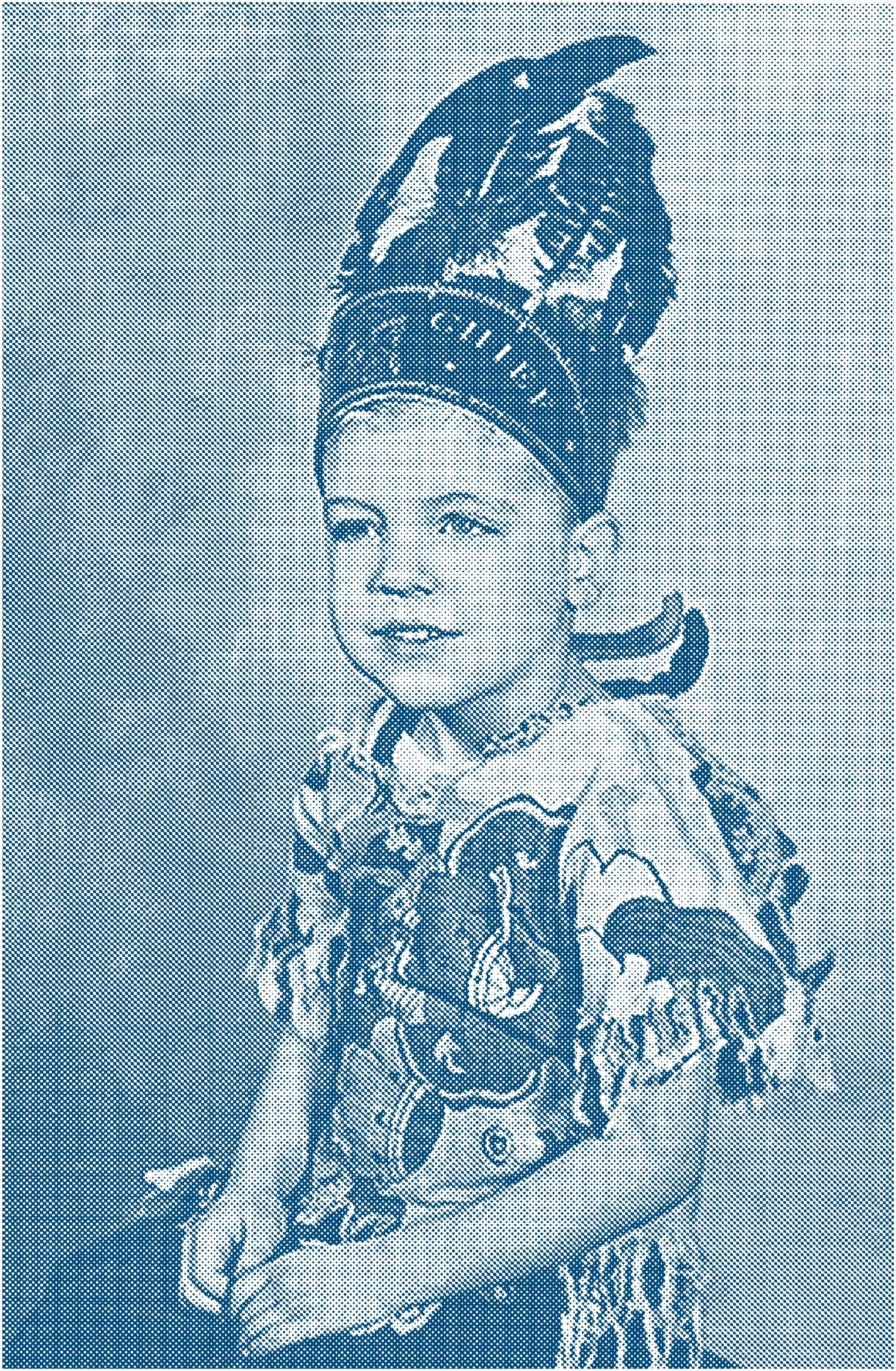
The New York Times -- Dec 12, 1994
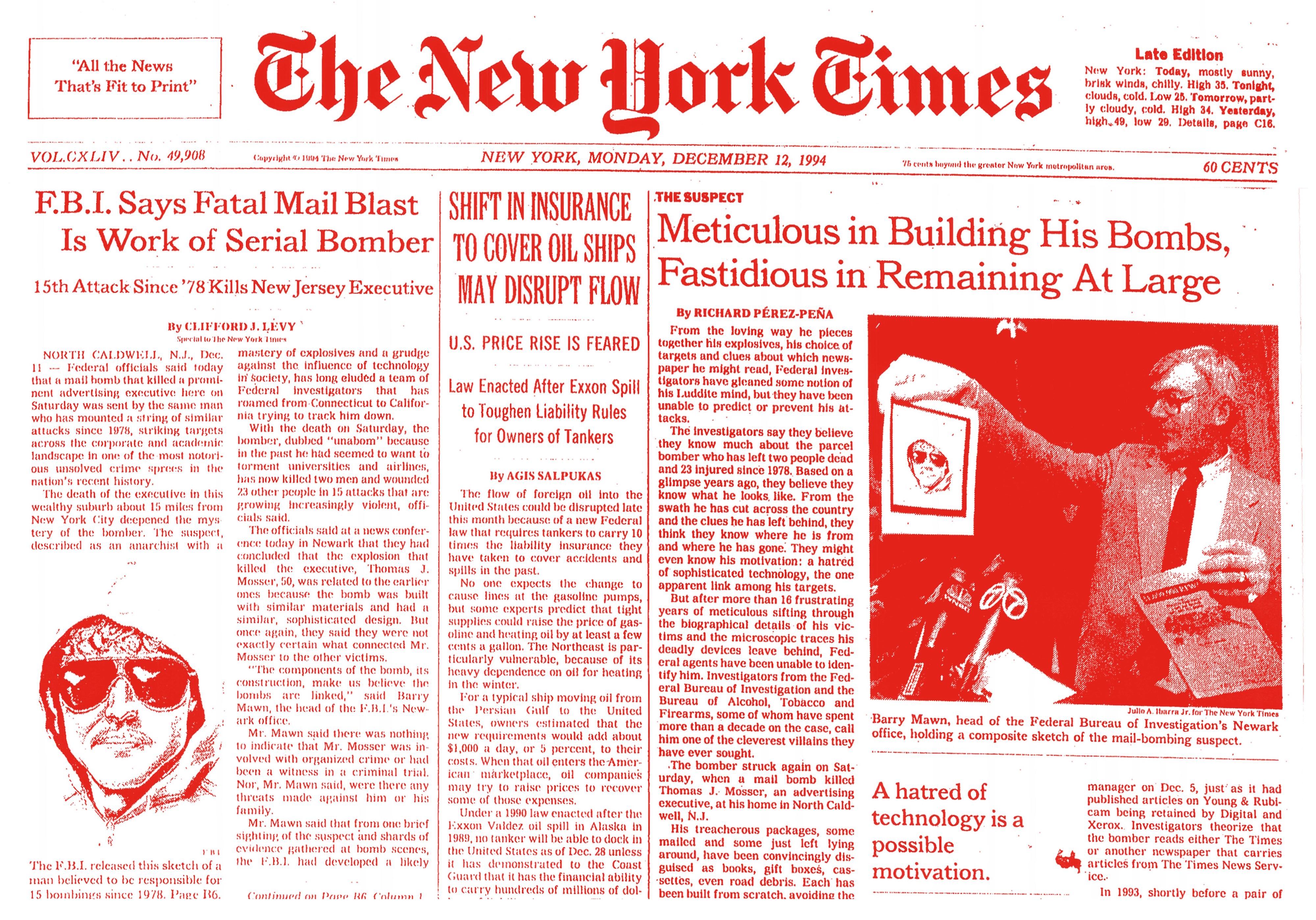
The New York Times, New York Issue, Monday December 12, 1994
“All the News That’s Fit to Print"
VOL.CXLIV.. No. 49,908
Late Edltlon
New York: Today, mostly Bunny, brlsk wlnd», chltiy. Hlgh 35. Tonlght, cloudn, cold. Ix)w 25. Tomorrow, part- ly cloudy, cold. Hlgh 34. Yeaterday, blghw.49, low 29. Detalle, pago C16.
F.B.I. Says Fatal Mail Blast Is Work of Serial Bomber
15th Attack Since '78 Kills New Jersey Executive
By CLIFFORD J. LEVY
Special to The York Times
NORTH CALDWELL, N.J., Dec. 11 — Federal officials said today that a mail bomb that killed a prominent advertising executive here on Saturday was sent by the same man who has mounted a string of similar attacks since 1978, striking targets across the corporate and academic landscape in one of the most notorious unsolved crime sprees in the nation's recent history.
The death of the executive in this wealthy suburb about 15 miles from New York City deepened the mystery of the bomber. The suspect, described as an anarchist with a mastery of explosives and a grudge against the influence of technology in society, has long eluded a team of Federal investigators that has roamed from Connecticut to California trying to track him down.
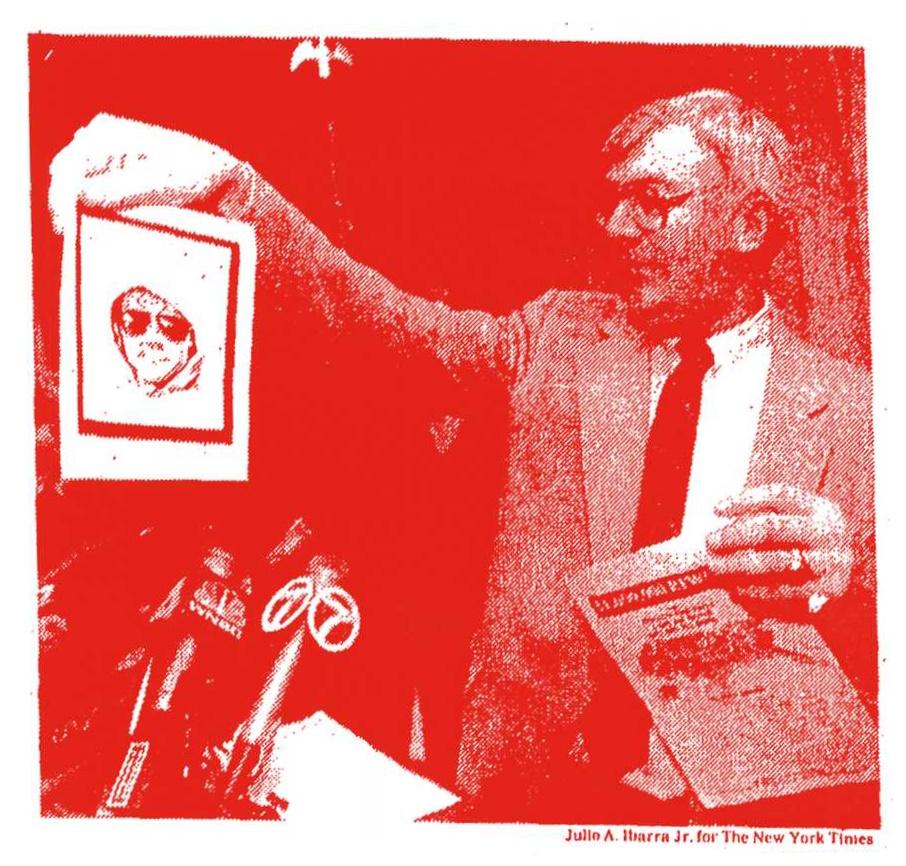
With the death on Saturday, the bomber, dubbed "unabom" because in the past he had seemed to want to torment universities and airlines, has now killed two men and wounded 23 other people in 15 attacks that are growing increasingly violent, officials said.
The officials said at a news conference today in Newark that they had concluded that the explosion that killed the executive, Thomas J. Mosser, 50, was related to the earlier ones because the bomb was built with similar materials and had a similar, sophisticated design. But once again, they said they were not exactly certain what connected Mr. Mosser to the other victims.
"The components of the bomb, its construction, make us believe the bombs are linked," said Barry Mawn, the head of the F.B.I.'s Newark office.
Mr. Mawn said there was nothing to indicate that Mr. Mosser was involved with organized crime or had been a witness in a criminal trial. Nor, Mr. Mawn said, were there any threats made against him or his family.
Mr. Mawn said that from one brief sighting of the suspect and shards of evidence gathered at bomb scenes, the F.B.I. had developed a likely
Continued on Page B6, Column 1
SHIFT IN INSURANCE TO COVER OIL SHIPS MAY DISRUPT FM
U.S. PRICE RISE IS FEARED
Law Enacted After Exxon Spill
to Toughen Liability Rules
for Owners of Tankers
By AGIS SALPUKAS
The flow of foreign oll into the United States could be disrupted late this month becausc of a new Federal law that requires tankers to carry 10 tirnes the liability Insurance they have taken to cover accidents and spills in thc past.
No one expects the change to cause lines at the gasollne pumps, but some experts predict that tight supplies could raisc the price of gasolina and heating oil by at least a few ccnts a gallon. The Northeast is particularly vuhierable, becausc of its hcavy dependcncc on oil for heating in the winter.
For a typical ship moving oil from the Persian Gulf to the United States, owners estimated that the new requirements would add about $1,000 a day, or 5 perccnt, to their costs. When that oil enters the-American mãrketplace, oil companies may try to raisc prices to recover some of thosc expenses.
Under a 1990 law enacted after the Exxon Valdez oil spill in Alaska in 1989, no tanker will be able to dock in the United States as of Dcc. 28 unloss il has demoDsêrated to the Coast Guard that it has the financial ability to carry hundreds of millions of dol-
Meticulous in Building His Bombs, Fastidious in Remaining At Large
By RICHARD PÉREZ-PENA
From the loving way he pieces together his explosives, his choice of targets and clues about which newspaper he might read, Federal investigators have gleaned some notion of his Luddite mind, but they have been unable to predict or prevent his attacks.
The investigators say they believe they know much about the parcel bomber who has left two people dead and 23 injured since 1978. Based on a glimpse years ago, they believe they know what he looks like. From the swath he has cut across the country and the clues he has left behind, they think they know where he is from and where he has gone. They might even know his motivation: a hatred of sophisticated technology, the one apparent link among his targets.
But after more than 16 frustrating years of meticulous sifting through the biographical details of his victims and the microscopic traces his deadly devices leave behind, Federal agents have been unable to identify him. Investigators from the Federal Bureau of Investigation and the Bureau of Alcohol, Tobacco and Firearms, some of whom have spent more than a decade on the case, call him one of the cleverest villains they have ever sought.
The bomber struck again on Saturday, when a mail bomb killed Thomas J. Mosser, an advertising executive, at his home in North Caldwell, N.J.
His treacherous packages, some mailed and some just left lying around, have been convincingly disguised as books, gift boxes, cassettes, even road debris. Each has been built from scratch, avoiding the ...
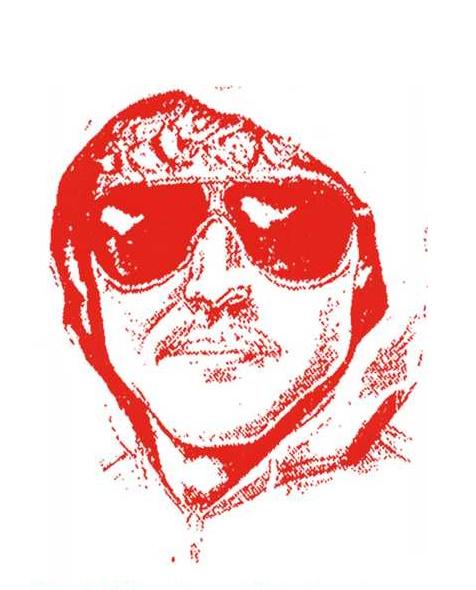
A hatred of technology is a possible motivation.
... manager on Dec. 5, just as it had published articles on Young & Rubicam being retained by Digital and Xerox. Investigators theorize that the bomber reads either The Times or another newspaper that carries articles from The Times News Service.
In 1993, shortly before a pair ...
Road to Revolution Excerpt
... thanks, because I’m not sure that they would want to be named publicly. But above all I have to thank Dr. Patrick Barriot, who has shown me the greatest kindness and without whose generous help this book could not have been published.
For the sake of clarity, I want to state here in summary form the four main points that I’ve tried to make in my writings.
1. Technological progress is carrying us to inevitable disaster. There may be physical disaster (for example, some form of environmental catastrophe), or there may be disaster in terms of human dignity (reduction of the human race to a degraded and servile condition). But disaster of one kind or another will certainly result from continued technological progress.
This is not an eccentric opinion. Among those frightened by the probable consequences of technological progress are Bill Joy, whose article “Why the Future Doesn’t Need US”[1] is now famous, Martin Rees, author of the book “Our Final Century”[2], and Richard A. Posner, author of “Catastrophe: Risk and Response”[3]. N one of these three is by any stretch of the imagination radical or predisposed to find fault with the existing structure of society. Richard Posner is a conservative judge of the United States Court of Appeals for the Seventh Circuit. Bill Joy is a well-known computer wizard, and Martin Rees is the Astronomer Royal of Britain. These last two men, having devoted their lives to technology, would hardly be likely to fear it without having good reason to do so.
Joy, Rees, and Posner are concerned mainly with physical disaster and with the possibility or indeed the likelihood that human beings will be supplanted by machines. The disaster that technological progress implies for human dignity has been discussed by men like Jacques Ellul and Lewis Mumford, whose books are widely read and respected. Neither man is considered to be out on the fringe or even close to it.
2. Only the collapse of modem technological civilization can avert disaster. Of course, the collapse of technological civilization will itself bring disaster. But the longer the technoindustrial system continues to expand, the worse will be the eventual disaster. A lesser disaster now will avert a greater one later.
The development of the technoindustrial system cannot be controlled, restrained, or guided, nor can its effects be moderated to any substantial degree. This, again, is not an eccentric opinion. Many writers, beginning with Karl Marx, have noted the fundamental importance of technology in determining the course of society’ s development. In effect, they have recognized that it is technology that rules society, not the other way around. Ellul especially has emphasized the autonomy of technology, i.e., the fact that modern technology has taken on a life of its own and is not subject to human control. Ellul, moreover, was not the first to formulate this conclusion. Already in 1934 the Mexican thinker Samuel Ramos[4] clearly stated the principle of technological autonomy, and this insight was adumbrated as early as the 1860s by Samuel Butler. Of course, no one questions the obvious fact that human individuals or groups can control technology in the sense that at a given point in time they can decide what to do with a particular item of technology. What the principle of technological autonomy asserts is that the overall development of technology, and its long-term consequences for society, are not subject to human control. Hence, as long as modern technology continues to exist, there is little we can do to moderate its effects.
A corollary is that nothing short of the collapse of technological society can avert a greater disaster. Thus, if we want to defend ourselves against technology, the only action we can take that might prove effective is an effort to precipitate the collapse of technological society. Though this conclusion is an obvious consequence of the principle of technological autonomy, and though it possibly is implied by certain statements of Ellul, I know of no conventionally published writer who has explicitly recognized that our only way out is through the collapse of technological society. This seeming blindness to the obvious can only be explained as the result of timidity.
If we want to precipitate the collapse of technological society, then our goal is a revolutionary one under any reasonable definition of that term. What we are faced with, therefore, is a need for out-and-out revolution.
3. The political left is technological society’s first line of defense against revolution. In fact, the left today serves as a kind of fire extinguisher that douses and quenches any nascent revolutionary movement. What do I mean by “the left”? If you think that racism, sexism, gay rights, animal rights, indigenous people’s rights, and “social justice” in general are among the most important issues that the world currently faces, then you are a leftist as I use that term. If you don’t like this application of the world “leftist”, then you are free to designate the people I’m referring to by some other term. But, whatever you call them, the people who extinguish revolutionary movements are the people who are drawn indiscriminately to causes: racism, sexism, gay rights, animal rights, the environment, poverty, sweatshops, neocolonialism it’s all the same to them. These people constitute a subculture that has been labeled “the adversary culture”[5]. Whenever a movement of resistance begins to emerge, these leftists (or whatever you choose to call them) come swarming to it like flies to honey until they outnumber the original members of the movement, take it over, and turn it into just another leftist faction, thereby emasculating it. The history of “Earth First!” provides an elegant example of this process.[6]
4. What is needed is a new revolutionary movement, dedicated to the elimination of technological society, that will take measures to exclude all leftists, as well as the assorted neurotics, lazies, incompetents, charlatans, and persons deficient in self-control who are drawn to resistance movements in America today. Just what form a revolutionary movement should take remains open to discussion. What is clear is that, for a start, people who are serious about addressing the problem of technology must establish systematic contact with one another and a sense of common purpose; they must strictly separate themselves from the “adversary culture”; they must be oriented toward practical action, without renouncing a priori the most extreme forms of action; and they must take as their goal nothing less than the dissolution of technological civilization.
Excerpts from Ted Kaczynski: The Road to Revolution. Editions Xenia, Vevey 2008.
Editorial
Bis zum 3. April 1996 war Theodore Kaczynski die meistgesuchte Person in den USA. Zwischen 1975 und 1995 verschickte er insgesamt 16 Briefbomben an verschiedene Schlüsselpersonen in Forschung und Wirtschaft. Die US-Bundes-polizei suchte jahrelang vergeblich nach dem als Unabomber bekannten Täter. Die Spekulationen über seine Person sowie über die Hintergründe seines Handelns beschäftigten die Medien während gut zwanzig Jahren. 1995 kündigte er an, weitere Menschen zu töten, sollte sein Manifest «Die industrielle Gesellschaft und ihre Zukunft» nicht veröffentlicht werden. Mit der Veröffentlichung seines Manifests und der Verhaftung von Theodore Kaczynski im darauf folgenden Jahr erreichte die Berichterstattung einen letzten Höhepunkt. Wenn darin nicht seine Kritik an der technologischen Gesellschaft an sich als Irrung eines verwirrten Fanatikers demontiert wurde, dann wurden zumindest seine von ihm gewählten Mittel verurteilt. Theodore Kaczynski wurde für den illegalen Transport, Versand und Einsatz von Bomben sowie der Tötung von drei Personen zu einer lebenslangen Gefängnisstrafe in der SuperMax Haftanstalt in Florence, Colorado, verurteilt.
Seit der Veröffentlichung des Manifests sind 15 Jahre vergangen; vielen ist Theodore Kaczynski kein Begriff mehr, zu zahlreich sind die kleinen Ablenkungen, zu wichtig die individuelle Perspektive. Dabei war der Wandel der technologisierten Gesellschaft selten so evident wie in den letzten zehn Jahren. Es scheint, dass nach seiner Verhaftung das «Netz»[1] die Kontrolle übernommen hat. Dass Kaczynski mit seinen Ideen und Ansichten zur technologischen Entwicklung nicht alleine dasteht, zeigt sich in den besorgten Stimmen anderer anerkannter Personen aus Wissenschaft oder Politik.[2]
Zusammen mit 60 Studierenden der Ecole cantonale d‘art de Lausanne (ECAL) wurde die Verarbeitung des Falles in Medien, Kunst und Geschichte erneut untersucht. Welchen Einfluss haben die Strategien medialer Darstellung auf die öffentliche Wahrnehmung von Täter und Opfer, welche Bedeutung kommt dabei der Position innerhalb der technologischen Gesellschaft zu, und was für Parallelen lassen sich zu anderen Fällen ziehen? Wie wurde das System angegriffen, und wie hat sich das System zur Wehr gesetzt? Und: welche Position bezieht die Linke dabei? Klar ist, dass die vorliegende Ausgabe mit dem Anliegen nicht alleine dasteht: 2008 erschien im Waadländer Verlag Xenia Press die erste authorisierte Sammlung von Theodore Kaczynskis Texten[3] und im Oktober 2009 fand im Pa-lais de Tokyo in Paris eine Ausstellung zu ihm statt. Wie weit lassen wir es zu, dass wir mit jedem Schritt ein kleines Stück Autonomie preisgeben und wieso ist das System dennoch nicht unfehlbar?[4] Ob wir einen Beitrag zur Klärung liefern können, wird sich zeigen.
Family Pictures
Inside cover
Ted Kaczynski in costume as a kindergartener, circa 1947. The Evergreen Park of the early 1950s held a special fascination for Ted and his younger brother Dave, as well as their father, Turk, a sausage maker who cherished the outdoors. It was a sense of wilderness embodied bythe sprawling field across the Street from the new home. The sun sparkled off the meadow's bits of iron pyrite - fool's gold - which the neighborhood children collected and coveted. The Kaczynskis picknicked in the Paios Hills Forest Preserve, and swam in Lake Michigan on visits to Michigan's Warren Dunes State Park. The boys hiked with their father and huddled over campfires as Turk told stories about what life was like for early Native Americans.
4
Ted Kaczynski about age 6.
5
Ted (top) and Dave Kaczynski during a family outing at an Illinois forest preserve in the early 1950s. Later in life, Dave carne to believe his brother's affinity for the woods was different from hisown. «I got the sense that it was an escape from people,» he said, «from cultural and social stresses that he didn't want to cope with.»
6
Ted Kaczynski with his brother Dave and his pet parakeet. Ted, age 9, and David Kaczynski, 2, with the family's pet parakeet in 1952, the year the family moved to south suburban Evergreen Park. This favorite family photo sits in a hallway, on a table near Wanda Kaczynskis bedroom door. The photo was in the room when Gary Wright, Teds 12th bombing target, first met Wanda almost a decade ago.
7
Dave and Ted Kaczynski on a family camping trip in 1956, when Ted was about 14 years old. The year before, the older brother had already started to struggle with traditional morality. In a journal entry, Ted recounted seeing a girl on the Street when he was 13: «So her appearance antagonized me, and, from habit, I began looking for a way to justify hating her, within my logical system. But then I stopped and said to myself, 'This is getting ridiculous. I'll just chuck all this silly morality business and hate anybody I please.' Since then I have never had any interest in or respect for morality, ethics or anything of the sort.» At age 15 he would earn a mathematics scholarship to Harvard University.
8
Ted and Dave Kaczynski outside their Evergreen Park home in 1958. Ted was graduating early from Evergreen Park Community High School and would go on to Harvard and then the University of Michigan. Dave also would graduate early from high school, and attend Columbia University at age 16.
9
Ted Kaczynski as an assistant professor of mathematics at the University of Califórnia, Berkeley, in the late 1960s. At Berkeley he was excruciatingly shy, to the point that his students scorned him. Ted shunned mathematics and technology. He would later move to Montana and bomb this campus twice.
10
Ted Kaczynski is in the background of the photo, which shows his grandmother Helen Kaczynski (left) and cousin Kathy Kaczynski during a family gathering in Evergreen Park circa 1965.
11
Ted Kaczynski as student of Harvard in 1962.
12
Ted Kaczynski in the family's lowa apartment in the late 1960s, in his mid-20s. By this time, hewasa professor at the University of Califórnia, Berkeley. Shortly thereafter, he began to withdraw from society and wander. Given the ethos of the time, brother Dave said, Ted's «dropping out seemed like almost a heroic thing.»
13
Ted Kaczynski over a car near Lincoln, Mont., in the early 1970s, after Ted had settled outside the small town, immersing himself in a self-imposed survivalist retreat. He shunned electricity, poached wild game and grew his own vegetables. Here he started building bombs--primitive devices, with triggers fashioned from match heads.
14
Ted and his father, Turk, during a visit to Ted's Montana home in the early 1970s. Ted's journal entries from this period show he was no environmentalist, even though the public would later perceive the Unabomber asan eco-crusading Luddite. «I don't even believe in the cult of nature-worshippers or wilderness-worshippers. (I am perfectly ready to litter in parts of the woods that are of no use to me...),» he wrote.
15
Ted (left) and his brother (far right) with some of Dave's friends at the Kaczynski family's home in Lombard in 1978.
16
Ted Kaczynski and his mother, Wanda 1978. After Dave fired Ted from his factory job for harassing a female supervisor, Dave traveled to Texas which became his sanctuary. The brothers later would reconcile.
17
During his stay in Lincoln, Mont., Ted Kaczynski shunned electricity, poached wild game and grew his own vegetables. But the Montana retreat only seemed to fuel his isolation and bizarre behavior.
18
Ted Kaczynski outside his parents' home in west suburban Lombard in 1978, the year he delivered his first bomb. The bomb was weak, injuring the officer's hand. In a journal entry from 1977, Kaczynski laid out his plans to kill. «I emphasize that my motivation is personal revenge. I don't pretend to any kind of philosophical or moral justification. ... My ambition is to kill a scientist, big businessman, government official or the like. I would also like to kill a Communist.
Cabin Pictures
1
Bill Sprout, of Ennis, Mont., drives the Unabomber's cabin with a Califórnia Highway Patrol escort through Emigrant Gap on Interstate 80 in early December 1997.
2
Employees at a Sacramento storage company turn the Montana cabin of Unabomber suspect Ted Kaczynski upright before storing it in a warehouse at Mather Field in December 1997.
3
Members of the news media view the cabin that Unabomber Theodore Kaczynski lived in, after it was moved out of storage facility in Rancho Cordova, Calif.
4
Bill and Supervisory Special Agent, David Alford, posed in front of the cabin used by Ted Kaczynski, the Unabomber. They «processed» the cabin in April 1996 and collected more than 1,000 pieces of evidence.
5
The cabin that Kaczynski built while living in Montana has been held in storage in Rancho Cordova CA
6
Photographer Richard Barnes originally photographed the Unabomber cabin on assignment for the New York Times magazine in 1998. At that time the cabin was in a warehouse in Califórnia, where it was being stored as eviden
7
Daniel Joseph Martinez' The House that America Built (2004).
Martinez reconstructed a full-scale replica of Kaczynski's clapboard cabin, wedged awkwardly at a raking angle into the gallery space and split vertically (Gordon Matta-Clark-style) down the middle, as if being dissected to see what bland horrors it contains. But inside it is empty, just an uninviting void of raw plywood.
8
«Pause» by Chris Larson, was shown at Rare gallery in 2005. It had a car crashing into it - actually a repro of 'The Dukes of Hazzard' '69 Dodge Charger - made of lumber, too.
9
Kaczynski's 10x12-foot cabin is the central artifact in an exhibit chronicling the FBI's first 100years (the residence is found in a section titled «A Mad Bomber and His Manifesto»), Kaczynski sought to call the appellate panel's attention to the Newseum display since the judges have been dealing with the killer's bid to halt the auction of his journals, correspondence, and lengthy manifesto. The subject of the privacy ríghts of Kaczynski's victims has been frequently addressed in recent Court of Appeals filings.
10
According to the Washington Post, Ted Kaczynski, is protesting that his Montana cabin, the site of his eventual capture, is part of a display at the Newseum: «I recently received a page from the Washington Post, 3une 19, 2008, page A9. This comprises a full-page, full-color advertisement that features my cabin, which is being exhibited publicly at something called a «Newseum». Since the advertisement States that the cabin is «FROM FBI VAULT» it is clear that the government is responsible for the public exhibition of the cabin. This has obvious relevance to the victims' objection to publicity connected with the Unabomber case».
Read the complete Letter on the opposite Page.
11
Alois Mosbacher hat in seiner neuen Bilderserie «My Cabin» das Blockhaus von Ted Kaczynski in Montana gemalt.
12
Matt O'Dell: «Industrial Society and Its Future», Unabomber's Cabin, Montana, 1996 (2006)
36 x 34 x 26.5 cm — Wood, wood stain, metal, modelling details, Video and soundtrack Pilar Corrias and Adam Prideaux, London
13
The Unabomber's Cabin, from the series Buildings of Disaster by Constantin Boym and Laurene Leon Boym (bonded nickel)
14
Montana Cabin
(Larry Sanders / The Last Best Place) 2007 by Harry Blackett
«The Unabomber has been referenced in the work of Jamie Shovlin and Seth Weiner. Two years prior to Kaczynskis Capture, on the fictional televisionai talk show, The Larry Sanders Show, Larry Sanders (played by Garry Shandling) moved to a Montana cabin as an escape from N.Y./L.A. celebrity culture. I was interested in this juxtaposition and how real-life seemed to be mirroring TV, rather than the reverse. ,The Last Best Place' is a Montana State slogan».
15
A remake of the Unabomber's cabin is installed in the warehouse-like space at Exit Art in NYC. Playing on a 1969 Pioneer stereo within the cabin is a digitally synthesized reading of «Life Without Principie» by Henry David Thoreau. An array of tactile transducers, which vibrate at infrasonic frequecies, is mounted to structural elements beneath the cabin's floor, and is driven by the stereo's audio signals. Thus, the Unabomber's cabin literally resonates with the words of Thoreau. The vibrations propagate up from the floor, through the soles of the feet, and into the viewer's body. The words are audible as a muffled rumbling voice produced not by an actual speaker, but by the boards of the cabin itself.
16
Robert Kusmirowski's sculpture «Unicabine» New Museum in New York 2008
17
Cover of the 10th Issue of the Palais de Tokyo magazine showing the picture «Unabomber Cabin, Montana 1998» by Richard Barnes. This issue is dedicated to the exhibition «Chasing Napoleon».
18
The Students Cabin at ECAL during the «Image & Imagery» Workshop November 2009.
The Cabin & The White Cube
Ungeachtet der Tatsache, dass er auf einem schicksalstrãchtigen Campingausflug soeben mehrere Hektaren Waldland in Brand gesteckt hatte, bezog Henry David Thoreau am 4. Juli 1845, dem amerikanischen Unabhãngigkeitstag, nicht weit davon entfernt in den Wãldern von Massachusets eine selbsgebaute Hütte, um sich der Gesellschaft zu entziehen. Die Hütte die kaum fünf auf drei Meter mass, war dabei mehr ais ein dilettantischer Versuch, ein Haus zu bauen; sie war für ihn Kritik an den Krankheiten, an denen das Amerika des 19. Jahrhunderts litt sowie ein philosophisches und politisches Manifest für die Selbstversorgung. In seinem Werk «Walden. Or life in the Woods» (deutsch: Walden. Oder das Leben in den Wãldern) beschrieb er sein einfaches Leben am See und dessen Natur, aber er integrierte auch Themen wie Wirtschaft und Gesellschaft.
Mit seiner Behausung begründete Thoreau eine lange Reihe von utopischen Eremitagen, die aus Frustration, Widerstand oder visionãren Erwartungen gebaut wurden. Die Reihe führt uns auch zur bescheidenen Behausung von Professor Theodore J. Kaczynski. Nachdem auch er 1972 sein bisheriges akademisches Leben mit aufgegeben hatte, um dem von ihm ais Irrweg wahrgenommenen amerikanischen technologisch-industriellen Systems zu entfliehen, zog Kaczynski ebenfalls in die Wildnis von Montana. In der Hütte, die Thoreaus Prototyp nicht unãhnlich war, verfolgte Kaczynski jedoch nicht den von Thoreau spãter begründeten zivilen Ungehorsam. Vielmehr baute er dort die Briefund Paketbomben, die er in den folgenden 20 Jahren an von ihm ausgewãhlte Reprãsentanten aus Forschung und Wirtschaft schickte.
Nach der Verhaftung von Theodore Kaczynski 1996 wurde die Hütte in das Beweislager des FBI transportiert, das Innere der Hütte wurde inventarisiert und archiviert. Dabei wãre es auch beinahe geblieben,
denn nachdem der Prozess vorbei war, sollte die Hütte zerstõrt werden. Die schicksalshafte Konservierung verdankt die Hütte Scharlette Holdman, einer Ermittlerin in Kaczynskis gerichtlicher Verteidigung. Dass sich über zehn Jahre spãter zahlreiche Kunstwerke auf die Hütte beziehen werden, konnte damals noch niemand ahnen. Zwar hat Amerika eine lange Tradition darin, ihre Verbindungen zu Verbrechern durch Museen oder Tourismus aufrecht zu erhalten. Bekanntheiten wie Jesse James oder Al Capone haben gar ihre eigenen Museen erhalten.
Dass der Amerikanische Staat früher oder spãter auch an Kaczynskis Hütte gefallen finden würde, ist somit nicht überraschend. In einer 2008 erõffneten Ausstellung über die ersten 100 Jahre des FBI wird im Newseum in Washington die Hütte ais authentisches Artefakt der bisher grõssten Ermittlung ausgestellt9. Die eigentliche Beuteschau fing jedoch bereits 1998 an, ais der Fotograf Richard Barnes im Auftrag des New York Times Magazines die Hütte in einem kalifornischen Lagerhaus fotografierte6. Abseits dieses dokumentarischen Bezugs befinden sich künstlerische Arbeiten, die sich der Hütte aufunterschiedliche Weise bedienen. Ais Motiv für Olbilder, Skulpturen, oder ais reine Referenz; die Hütte ist zum popkulturellen Objekt geworden. Nur wenige Arbeiten scheinen diesen Aspekt zu reflektieren. Robert Kusmirowski verweigert in der Ausstellung im New Museum in New York dem Besucher den Zutritt zu seiner «Unicabin»16 und lãsst damit wie beim Dilemma um Schrõdingers Katze offen, ob das revolutionãre Gedankengut darin noch lebt, oder ob es bereits versteigert wurde. Dass die Ausstellung in New York zeitgleich zu der Ausstellung des FBI in Washington stattfand, ist wohl eher dem Zufall zu verdanken. Wãhrend in letzterer die Hütte begehbar ist, und damit ais (leerer) Beweis für die Uberwindung des Bõsen dient, scheint Kusmirowski das darin enthaltene Gedankengut eher zu achten.
Kusmirowski ist nicht der Einzige der den Zugang zur Hütte verwehrt. Auch Daniel Joseph Martinez lãsst in seiner Arbeit7 die Hütte verschlossen. Seine ãusserlichen Referenzen an Gordon Matta-Clark sowie an die populãre Farbpalette von Martha Steward scheinen jedoch eine Kritik des Mittelstandes zu verfolgen. Die innere Leere ist dabei evident, und gewollt. Der Zugang muss jedoch nicht um jeden Preis verwehrt bleiben. Chris Larson verschafft dem Besucher in seiner Installation «Pause» einen gewaltsamen Einblick in das Innere der Hütte indem er sie von dem 69er Dodge Charger der populãren 70er TV-Serie «The Dukes Of Hazzard» niederfahren lãsst8. Die amerikanische Unterhaltungsindustrie vs. den Unabomber.
Den Bogen zurück zu Thoreaus Exil zu spannen versuchte lediglich Seth Weiner15. In einer begehbaren Replik der Hütte Kaczynskis lãsst er eine digital emulierte unverstãndliche Stimme Teile von Thoreaus «Life Without Principie» rezitieren. Begehbar war auch die in der Ecole cantonale d‘art de Lausanne (ECAL) aufgebaute Hütte. Mitten in einem Grossraum-Schulzimmer für mehr ais 100 Schüler diente sie ais Refugium. Beide, Thoreau wie Kaczynski verbrachten in dem selbsgewãhlten Exil viel ihrer Zeit damit, darüber nachzudenken, womit sie die Nation am besten treffen konnten und wie sich die Gesellschaft zum besseren Wenden liesse. Den Studierenden der ECAL blieb dazu nicht viel Zeit; erbaut in einer Woche, in der die zentrale Aufsicht fehlte, musste die Hütte bereits nach zwei Tagen wieder den Regeln des Systems weichen.
Theodore Kaczynski versuchte im Juli 2008 erfolglos die Ausstellung seiner Hütte im Newseum in Washington gerichtlich zu verhindern. Welche Position er gegenüber den zahlreichen anderen Arbeiten vertritt, ist nicht bekannt.
von Salomon Proust
Legal Documents
Protest Letter of Ted Kazcynski against the Showing of his Cabin in the Newseum in Washington DC
No. O6-IO5/4-
...
Ted Kaczynski has filed a lawsuit seeking the return of items seized from his Montana shack, claiming that the material is a boon for «serious researchers» and would «help to reveal the true facts» of his criminal case
...
List of the Books found in Ted Kaczynski's Cabin on his Capture
...
The System Projects Its Own Fear
An interview with Slobodan Despot, founder of Xenia Editions, who has recently published the only version of the manifest by Ted Kaczynski approved by the author himself. Our interest is the censorship problems related to the publishing of the book: The Road to Revolution.
Julien: You are Slobodan Despot who created Xenia Editions in 2005?
SD: Yes, I am.
Dimitri: We would like to discuss the accusation made by the author in his preface, where he complains about the final version of his text. He pretends that there are a few mistakes left but that he has not had enough time to correct them because of the US authorities censoring the text. Could you tell us more about this?
SD: Yes, he was in a hurry to publish his book for practical and political reasons. The US authorities were starting proceedings against him with the objective of seizing what he would earn with a hypothetical publication of his book, as well as prohibiting him to write. At the time of his arrest, there was no legal possibility to do the latter. You certainly know that after 9/11, new laws were passed limiting the freedom of expression of people accused of terrorism, such as the famous «patriot act». Some of of Kaczynski’s writings were labelled terrorist. This is not true: most of his writings are neither violent nor terrorist. As US authorities were after him, he was in a hurry, and had to publish his book with some subsisting mistakes. Being a true perfectionist, somehow in a pathological way, he was really dissatisfied with the situation. He is actually never satisfied with what he has written.
Dimitri: Did he ask anybody to publish his work or did anyone else ask him to do it?
SD: In jail, Kaczynski established a relationship with a few intellectuals and students, which made the publication possible. Patrick Barriot, a French doctor, is a close friend of Kaczynski’s, and they were close enough for Kaczynski to ask him to find a publisher for his first book, and to be approved by him. Doctor Barriot, also a friend of mine, came to me asking to publish it and that is what I did.
Julien: You published this book in 2008. We heard about some legal orders that were about to fall and which hastened the publication of the book. Did these court orders actually interfere with the publication? Is everything Kaczynski wanted to say in the book?
SD: I believe that the essence of what Kaczynski meant to convey was in it. But it is true that some choices were difficult to make, namely relating to the illicit chapter titled «What to do first», in which Kaczynski develops the idea of aggressiveness and murder. The chapter was censored by US authorities, so if we had kept it, it would have put the whole project in danger. We thought it would be clever not to publish the chapter so as to make sure the book would come out. We did not want to see the whole project fail because of one chapter, all the more so because the contents are extremely diverse: manifesto, letter exchanges, ethnological analysis, and that the whole book, excluding the chapter, adds up to 400 pages.
Julien: Was there a sort of judge or a commission who had rights over the writings and who were ready to filter the information?
SD: Yes, there was a lawyer who i gave permission to look over the book. In fact, I gave the book to read to two American lawyers and both stumbled over the «What to do first» chapter. We didn’t want to have Kaczynski’s reputation as a violent man strengthened, nor to let him be considered as more terrorist than he is already. Our purpose was to put at the public’s disposal Kaczynski’s mental world and ideas, and to make allowances between them and his acts.
Julien: Could you tell us in detail the problem with this chapter and its real content?
SD: In the text, Kaczynski explained that if you want to fight against the institutions, you sometimes have to fight physically and declare war without any kind of hesitation. The kind of things the ultra-environmentalists would do, for example. I regret I cannot tell you more about the chapter: as we decided not to publish it, I cannot really talk about it.
Dimitri: Is this text still mentioned by any organisation ?
SD: Today, in 2009, you find it in a lot of publications by ultra-environmentalists or anarchist organisations. That is not our problem. Kaczynski was a criminal and he still is. It took the police a long time to track down the suspect because the man operated alone and it was really difficult to catch him. The population was against him. What we wanted to put at everybody’s disposal was his innovative ideas about the evolution of the contemporary society. Of course he was not the first one to ask this type of questions. But the way he made it was new, that’s why it is important to publish this book. The aggressive aspect does not interest us.
Julien: Is there a court order to seize Kazcinski’s royalties?
SD: Yes, there is. That’s the reason why we signed a contract saying that he has no right over his writings and that he gets no royalties, because those would have gone directly to his victims. So you see, for Kaczynski it’s much simpler to collaborate with a European publisher, because an American publisher would always fear the consequences.
What you need to know is that we finally found an American publisher who agreed to publish the text next Spring, as a co-publisher for the American marketplace. Just because he thinks it’s worth trying it, and also he saw that I wasn’t subject to a court order, neither in Europe nor in the States. They could have tried to seize the copies sold through Amazon for instance, but so far they haven’t. At the end, what I want is a useable document. The Americans did not allow us to publish the controversial chapter, but they didn’t censure it because I did not publish it. Why didn’t I publish it ? Because I feared the consequences? No. I’m against censoreship. The thing is more complicated. Finally, an editor has to make choices, and that is what I did.
Dimitri: So, finally it is the publisher who decides ?
SD: Yes, that’s precisely his job. That’s why I think that the publisher is a key-person in the process of publication. Today you can send your texts to a printing house and make your own book without resorting to a publisher. But the chances are that the book won’t be a commercial success.
Julien: Didn’t you try to resist the pressure? Was there a court order which you could oppose ?
SD: How could I, from Switzerland, make myself heard while legal decisions were taken in the States? You know, we could have ignored them but then the English version would not exist. It would have been pure provocation against the US authorities and that was not my intent. It is not impossible that the whole text will be published in the future, but I believe the American justice will not change that kind of decision right now.
Julien: Kaczynski made bad use of his ideas. Would it be possible, for you, to make good use of his theories?
SD: Of course, a lot of people around him are peaceful. They are not terrorists or violent. They are university teachers or students, people feeling concerned about environmental and technological issues. Kaczynski influenced all the actors of the decreasing movement. Those people would never tell you that. A lot of people near the decreasing are saying that the Unabomber is a dangerous and crazy terrorist. For me and for a lot of other people, he is a man who speaks out loudly saying that the system has to change. I don’t believe he regrets his acts. He is a militant. And he is consistent: he lives in a hut, uses no electricity or any other industrial produce. He would like everybody to live the same way. The end justifies the means, that is what he means. If I kill somebody living inside the system, it’s no big deal because I am achieving what I think is right and important. He would also ask: What are the real, right weapons? I am powerless and lonely, I am a mathematician. I keep sending letters and essays to important newspapers to warn them about the dangers of our society, but nobody is listening to me. The point is that we are heading towards the complete destruction of our planet. Anything is better than the destruction of the planet, even murder.
Dimitri: In your opinion, is there a difference between the «American» and «European» way of considering the publication?
SD: In Europe, that kind of problem would be less important and people would not be as afraid of the publication of the chapter, rough and brutal as it may sound. In the States things are more complicated, as American society is a moralizing society. To read texts by Kaczynski is perceived badly, there is a moral fence so to say. Here it is different: for us it is quite obvious that on one hand Kaczynski is a criminal and a murderer, but that before that, he was also a mathematician, a scientist and a philosopher, and we know how to make allowances for both. For most of the Americans he is just one: a terrorist.
Since 2001, Americans are very reactive to the word terrorist. That’s the reason why I couldn’t find anyone who would distribute or publish the book in the States. I looked for an agent who would help me find a co-publisher, so the book would get into the distribution network to which I, as a European publisher, have no access. The agent I found said that she was sorry but she couldn’t do the job because she volunteered in an association concerned about the victims of terrorism. Another problem for an American publisher is that Kaczynski, apart from his three life sentences (if I am not mistaken), was also condemned to pay 5 million dollars to the victims’ families, so any benefit resulting from the publication of any of his texts would directly go to the victims. Obviously he will never be able to pay such an amount of money. Which makes it impossible for any publisher to earn money with Kaczynski’s texts. Another type of difficulty is that the royalties are all automatically taken by the IRS (Internal Revenue Service) and the administration, another reason why it makes no sense to publish the book.
Julien: You spoke of the approaches you made to American publishers who wouldn’t publish the texts. Actually they are censoring themselves without even suspecting that they are doing so...
SD: Yes, I think that the main censorship is self-censorship. Explicit, objective censorship is very unusual. Most of the time people don’t even dare speak out for fear of the consequences, so they keep their own words or writings for themselves. The system is not that repressive. My idea is you have to attempt doing something; if I had received a bomb or been put into jail, then it would have been very clear that the system is repressive and that our society cannot accept it.
Julien: Would you define yourself as inactive in a way?
SD: Yes, I’d rather be passive. Then you have these fears that we project on the world, on what can be said or not. The important thing is to attempt doing things, always.
Gent: The system projects its own fears, in fact.
SD: Obviously, we live in a system based on fear. The system is in fact hard, but in a passive way, which may be the most dangerous way anyhow.
F For Fake
Felix: Can we explain to you what we have in mind ?
Julien: What we are trying to do is a documentary film that does not have the same value as a journalistic film. We are trying to do a reality-fiction documentary on Kaczynski. Because we can easily extrapolate his words. We don’t know yet if it is worthwhile doing that. We would like to talk about a fake article or chapter that would have been censored because of an American law forbidding that chapter. We would also like to make our teachers believe until the last day that we’ve discovered something new on this case. With your help, we can create a really valuable document.
SD: To make short, you’re planning a hoax ? You want us to imagine that the book was censored ?
Julien: That’s what we want to pretend. Our hope in coming here was that you would suggest an idea, an element, or an article in the book that would have been censored. Something simple and interesting that is trust-worthy. We want you to be an actor for this second part of the interview. We don’t want to talk about the content of the censored part but more about the fact that the book was censored. The content will just be mentioned.
SD: For example an article about Kaczinsky calling for bloodlust ?
Julien: Yes, we did such hypotheses... We could tell people that he had a confederate.
SD: So I would have to explain why this chapter isn’t in the book ?
Julien: Yes. We care about making our purpose credible. What we would like to do is to pretend that the book has been under pressure and been censored.
SD: Ok. But what if the case gets published?
Julien: No, it will never get out of our school, we can sign a paper if you want.
There might be a chance that it gets published in the «Fabrikzeitung», a cultural-artistic underground magazine based in Zürich. So this fictional part must be seen from an artistic point of view. In any case, it will be clearly stated that these documents are fake.
SD: Ok. Let’s do it!
Felix: We took a leaf out of the documentary that pretended no one ever walked on the moon. When you watch this documentary, you never ask yourself if it is fake because of the credibility of the scientists explaining and telling facts that even landing on the moon is simply impossible.
SD: Indeed.
Julien: That’s a concept that interests us.
SD: Ok, let’s try!
Julien: Ok. I will pretext to ask a question about the book.
Dimitri: Shall we do it ?
Slobodan Despot: Yeah, let’s go !
The Notes
The first day, we discovered a small Vevey-based publisher who in 2008 published Ted Kaczyinski’s book, A road to revolution. We decided to try and meet that publisher, Slobodan Despot, whom we had only known for a few hours, through several google-found videos, and got an appointment with him for the following day. Before that meeting we had only had a few hours to get briefed on a topic we surely didn’t overcome. We realized we weren’t real reporters and had to do something different, something we could master. We immediately thought that Slobodan’s notoriety and credibility could help us in a way.
This is how we decided to script the interview in progress during the week. Conceptually, inventing a story that we would make credible by many ways was the best option. We focused on Slobodan Despot’s interest for the Kaczynski case, and asked him questions about the making of the book. Had there been any censorship? Did the US authorities have an eye on the writings before they got published, as we had assumed? Did Ted Kaczynski have the possibility to express himself as freely as it was supposed? Unfortunately, or maybe not, the answers had nothing of an American movie: there was no censorship, the US authorities couldn’t care less and therefore, Kaczynski could express himself as freely as an African swallow in springtime. It is only after we got those answers that we explained to Slobodan Despot the true point: faking. He kindly accepted to play our game and suggested to us the content of a pretended missing chapter of the book, where Theodore Kaczynski would have written texts totally unacceptable for the American self-righteous society, in which he engaged people to take up weapons and fight. We also got several materials to play with, including a hand-written letter from Kaczynski to Slobodan. We built up fake letters from this one, having Kaczynski say that there was no chance his book would ever be published without that missing chapter. To give even more credibility to our own William Karel’s Opération Lune, we found the articles of the new US Patriot-act limiting communications for terrorist inmates. With these, no one would doubt our story. A font was also designed, based on aczynski’s writing that we copied on his letter. The font is ugly and has no use, but conceptually goes along with our matter, giving a theoretical opportunity to fake documents.
Another point was that one of the two persons following the project during the week, was aware of our fake tv-show documentary, whereas the other one was our «victim». So we had two different points of view, one on the project from the outside and another one giving «conscious» advice. Even if we strongly suspect Gregor telling his friend Yvan. Or maybe Yvan pcked up the hoax by himself... He does look smart... Anyway.
As we were interviewing Slobodan Despot, we also had a camera hidden somewhere in a corner of the room. This way we had the full conversation video-recorded, storing up evidences against ourselves. We were able to make two movies, one showing what we wanted to be believed, and the other one, backstage.
At the end, telling any story using the good old «aesthetics of truth» would have worked alike. Thanks to Magritte, everyone knows pictures lie all the time. So does any media and it is no luxury to remind it.
The Media & The Message
In every public crime case, television and newspaper try to get the best view on the locations, the crime scenes, to show & prove the traces of the real. Bloodstains and murder weapons provide intense pictures and guarantee vast public attention. Looking at such images several years later, they develop to a documentation of past reality, the blur and get the emotional spin of a Hollywood movie. Additional to the shift of meaning during time, there is an other interesting coincidence in how crime cases are displayed in the media. There is a striking parallel between how criminals are photographed and how stars are being tracked by paparazzi photographers. While the criminal is, during his arrest, often escorted by police officers on each side, the star is being accompanied by the bodyguards. There is as well a idea of physical submission in that, either by the police or the paparazzi: While the first use guns to control their suspect, the second aim at the stars with long lens cameras. Additional to that, and even moor important is the conceptual resemblance: Both paries share the same iconic status because of their large public interest.
1
Trailer for the angled news coverage of ABC News Network. The television network is famous for its trash journalism and did vast coverage on the Unabomber after his arrest.
2
Biography - Ted Kaczynski, the Unabomber. Documentary DVD with fairly basic information on Ted Kaczynski. Nothing really new from any other news sources, but a quick summary.
3
Special issue of Newsweek magazine in 1998.
4
Special report issue of Time Magazine after Ted Kaczynskis arrest.
5
Unabomber - The True Story, 1996. A TV-pleasing film staring Robert Hays whom gained fame from the comedic Airplane movies and TV actor Dean Stockwell. A poorly edited movie with bad acting.
6
A fictional trailer by a ECAL students group for a possible feature film about the Unabomber in the near future. Made out of snippets of more or several blockbuster movies. The trailer implies the never changing habit of Hollywood to be cauth in a loop.
The following films were used for the collage: Mon Oncle, Les Barbouzes, Ne nous fâchons pas, The Shining, Paris Texas, Usual Suspects, Donnie Brasco, Ronin, Enemy of the State, Le Créateur, Les Rivières Pourpres, Blow, Man On Fire, Garden State, Collision, Romanzo Criminale, Munich, Collateral, Lord of War, Le Tigre et la Neige, Broken Flowers, The Serpent, Casino Royale, Zodiac, Surviver avec les loups, No Country for Old Men, Into the Wild, American Gangster, Mesrine, Public Enemy N°1, Las Vegas 21.
7
A secret level of the early first person shotter Duke Nukem 3D shows a poster of the Unabomber wanted sign. The game was released on January 29, 1996.
Original location of real and fictional crime scenes, seen trough the artificial eye of Google Streetview. The short clips shot the locations of the attacks on the following people: Cheddar Bob, Danny Vinyard, Kate Wheeler, Diogenes J. Angelakas, Chad Feldheimer, Charlotte Jean Palmer, Daniel Hiers, Arletta, Julie, Robert Paulson, Ann Farber, Vito Corleone, Frenchy, Walt Kowalski, Mickey Cohen, Joseph Allen Garcia, Leon, Larry Porter Chism, Robert Lee King, Montoya, Rita, Llewelyn Moss, Sannon Zielinski, Thomas Mosser, Terry Benedict, Joey Doyle, Franki Manoldi, Percy Wood, Paul Merle Eischeid, Amina Agisheff, Vincent Vega, Miss Torso, Mr. White, Gary Wright, Frederick McLean, Edmund Kemper, Andy Walker, Andy Dufresnes Wife, Pilcher, Senator Morton, Aaron Lopez Garcia, Terry Marker, Martha Vickers, Rachel Dawes, Captain Queenan, Jan Edgecomb, Miles Arched, Jack Torrance, Luther, Gilbert Murray, Calpurnia, Nicklaus Suino, David Farraday, Betty Lou Jensen, Janet Smith, Patrick Oliver, Randy Mark Yager, Lee Allen,
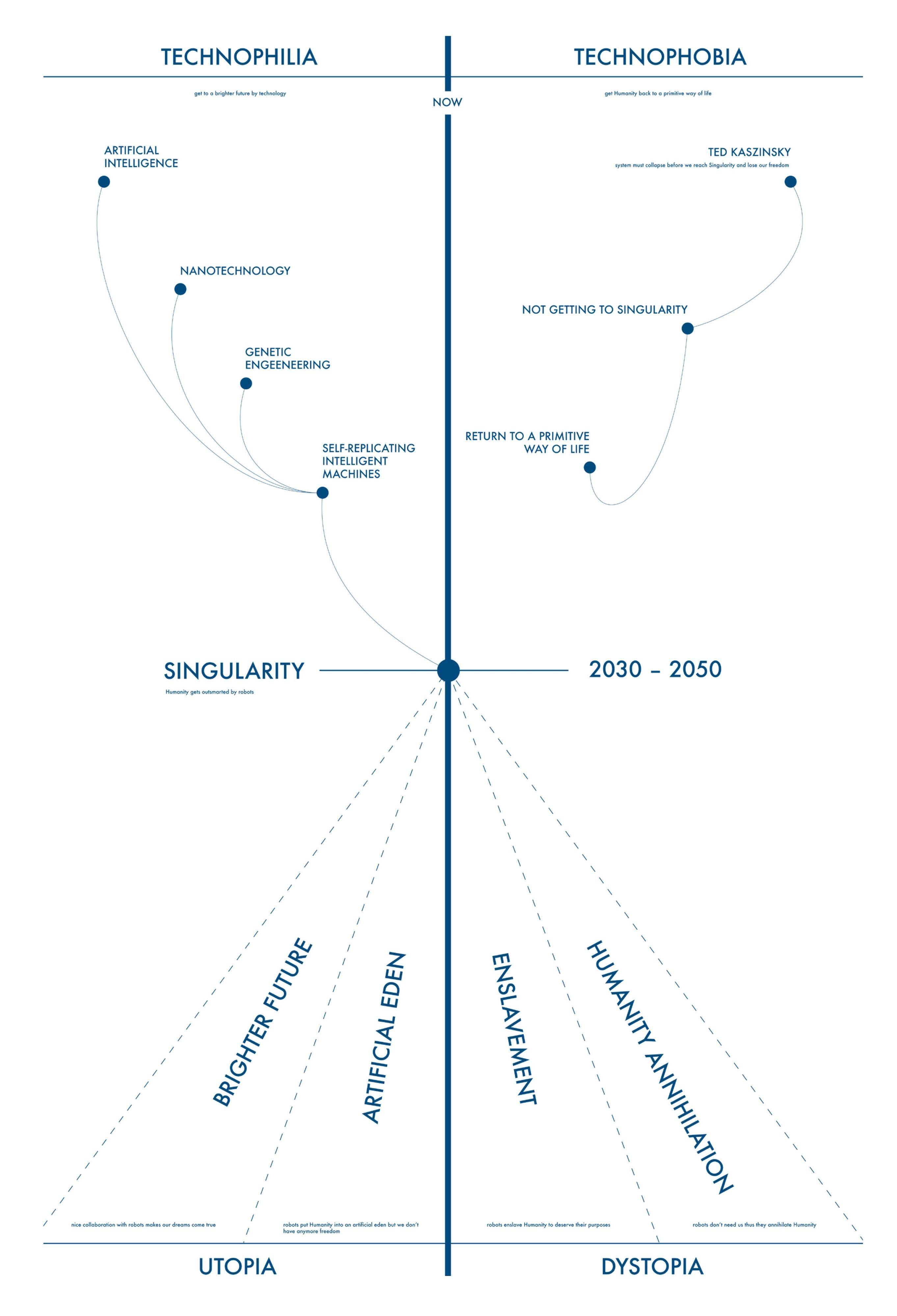

Linke, Avantgarde Und Fortschritt
Wie steht die linke zum technischen Fortschritt? Istjede technophile Bewegung automatisch links? Wâre Jimi Hendrix auch ohne Wah-Wah Pedal eine Ikone der Gegenkulturgeworden? Eine Spurensuche.
Das Verhãltnis der Linken zu technischem Vorschritt unterscheidet sich je nach linker Gruppierung: Es gibt Gruppen, die jegliche Art von Fortschritt ablehnen, da dieser stets nur dem Herr-schaftsapparat dient und beste - hende Produktionsprozesse sowie Machtverhâltnisse perfektioniert. Ais radikale Vertreter dieser Ansicht haben sich in den letzten Jahren die Anarcho-Primitivisten hervorgetan, von denen noch die Rede sein wird. Für Marxisten hingegen ist nicht der technische Fortschritt, sondern die Verteilung der Produktionsmittel das Problem. Hacker und Vertreter der Kommunikationsguerilla wiederum nutzen nicht nur neue Medien wie das Internet für subversive Aktionen, sondern haben mit ihren Aktionen zum Teil sogar die technische Entwicklung des Internets vorangetrieben. Ahnlich verhâlt es sich mit den künstlerischen Avantgarden, die sich meist links positionierten und aus ihrem Vorreiter-Selbstverstândnis heraus technische Neuerungen stets begrüsst haben. Doch bringt technischer Fortschritt auch automatisch revolutionâre Inhalte mit sich? Gerade der Blick auf die Kunst-Avantgarde eignet sich ais Einstieg ins Thema — hier manifestiert sich der ganze Widerspruch zwischen Technophilie und Technophobie, etwa dort, wo die fortschrittliche Form lediglich reaktionâre Inhalte transportiert.
Avantgarde ais permanenter Fortschritt
Mit «Looking for Mushrooms» prâsentierte das Kõlner Museum Ludwig im vergangenen Jahr eine Ausstellung über die Kunstszene von San Francisco in den fünfziger und sechziger Jahren. Der Titel deutete es bereits an: Drogen waren damals allgegenwârtig. Doch sie waren nicht das Zentrum dessen, was sich da neu formieren und schliesslich zu einer Szene führen sollte, die man im weitesten Sinne ais links oder doch zumindest ais «counterculture» bezeichnen kann. Im Zentrum stand etwas ganz anderes, nâmlich der kreative Umgang mit den unterschiedlichen Medien und deren Zusammenführung. Etwas, das heute Intermedialitât genannt wird. Herkõmmliche Kunstwerke waren in der Kõlner Ausstellung kaum zu sehen. Dafür sehr viele Videos. Die damalige Kunstavantgarde war meist ílüchtig und interdisziplinâr. Sie nutzte die neuesten technischen Errungenschaften, um Arbeiten zu schaffen, die sich der herkõmmlichen Vorstellung eines musealisierbaren Kunstwerks verweigerten. Wenn Film, wie Paul Virilio in seinem Buch «Krieg und Kino» ausführt, ursprünglich eine Erfindung des Militârs war, dann waren es nun Linke, die mit diesem Médium experimentierten, Grenzen ausloteten und es âsthetisch vorantrieben. «Looking for Mushrooms» verdeutlichte damit exemplarisch etwas, das für die ganze künstlerische Avantgarde in der zweiten Hâlfte des 20. Jahrhunderts charakteristisch ist: Formal war diese Avantgarde technikbegeistert, politisch links. Die Rede ist selbstverstândlich von einer westlichen Avantgarde, nicht vom staatlich diktierten Sozialistischen Realismus in der Sowjetunion, der auf die radikale Frühphase des russischen Futurismus und Konstruktivismus folgte. Und die Rede ist von einer nicht einheitlichen, nicht nâher definierten Linken, deren kleinster gemeinsamer Nenner eine antikapitalistische Haltung gewesen ist. John Cage beispielsweise, einer der radikalsten Komponisten des 20. Jahrhundert, hatte sich selbst Zeit seines Lebens ais Anarchist bezeichnet. Von genaujenem John Cage stammt ein Zitat aus dem Jahre 1937, das verdeutlicht, mit welcher Begeisterung die künstlerische Avantgarde auf den technischen Fortschritt hoffte: «Ich glaube, dass die musikalische Verwendung des Gerâuschs andauern und zunehmen wird, bis wir zu einer Musik gelangen, die mit Hilfe elektrischer Instrumente erzeugt wird, die jeden wahrnehmbaren Klang für musikalische Zwecke verfügbar machen werden.» Die Avantgardisten setzten auf technischen Fortschritt, weil dieser zu künstlerischem Fortschritt führte. Welcher wiederum ganz der kapitalistischen Verwertungslogik entsprach: Das Neue verkauft sich besser. Einer von vielen Widersprüchen, die sowohl die Avantgarde wie auch die westliche Linke kennzeichnen.
Esoterische Avantgarde
Aber stimmt das denn alies so pauschal? Hatten nicht die Futuristen, deren Hauptvertreter sich spâter Mussolini andienten, gezeigt, dass Technikbegeisterung und Progressivitât durchaus auch auf einer reaktionâren und inhumanen Weltanschauung aufbauen kõnnen? Und waren nicht einige der formal progressivsten Autoren des vergangenen Jahrhunderts rechte Antisemiten gewesen, unter ihnen Ezra Pound und Louis-Ferdinand Céline? Man muss nicht einmal solche Gegenbeispiele aus der Geschichte bemühen; bereits in der sich ais links gerierenden Avantgarde finden sich zahlreiche Beispiele dafür, dass technischer Fortschritt zwar formal begrüsst wurde, inhaltlich jedoch oft ein reaktionâres oder doch zumindest esoterisches Weltbild zum Vorschein kam. Bricht man zum Beispiel die formal brillanten Filme von Kenneth Anger auf ihren inhaltlichen Gehalt runter, bleibt nicht mehr ais stumpfer Satanismus und die Begeisterung für Aleister Crowley. Nicht anders verhâlt es sich mit den Arbeiten des Kalifornischen Filmemachers Stan Brakhage formal lassen sie einen atemlos zurück, handeln aber von nichts anderem ais spirituellem Zinnober. Karlheinz Stockhausen wiederum verschwendete ab 1977 das modernste Equipment für elektronische Musik an seinen «Licht»-Zyklus, dessen verquaste religiõse Mythologie am Ende wohl nicht einmal mehr Stockhausen selbst verstanden hat. Beispiele dieser Art liessen sich zahlreiche finden, nicht zuletzt beim bereits zitierten John Cage, der sein eigenes Werk aus dem Geist des Zen-Buddhismus verstanden sehen wollte. Dieser Widerspruch zwischen Inhalt und Form, zwischen Technikbegeisterung und Esoterik, kulminierte in den Gegenkulturen der Sechziger. Technischer Fortschritt sorgte für Stroboskope und irrsinnige Lightshows auf Psychedelic-Konzerten. Erst die Elektrifizierung der Gitarre und die hierzu neu entstandenen Effektgerâte, etwa das Wah-Wah-Pedal, machten den Sound von Jimi Hendrix mõglich. Was damals mit Hilfe von Technik und Drogen in den Kõpfen erzeugt wurde, war allerdings nicht notwendig progressiv und aufklârerisch, sondern oft das genaue Gegenteil: Rückzug in religiõse und spirituelle Gegenwelten. Eskapismus. Der Katalog zu «Looking for Mushroom» zitiert Paul Krassner, den Herausgeber der Undergroundzeitschrift «The Realist»: «Bevor ich LSD nahm, war ich Atheist. Jetzt begreife ich, was mit Gott gemeint ist, und hõre auf, an ihm herumzumâkeln.» Vielleicht liesse sich sogar überspitzt formulieren, dass die «counterculture» der ausgehenden 1960er das dialektische Gegenstück zum allgemeinen Fortschrittsglauben in der westlichen Gesellschaft darstellte: Wâhrend die USA den Flug zum Mond vorbereiteten, zogen deren langhaarige Kinder zu den Gurus nach Indien. In einem Interview mit dem «Kunstforum» stellt der Künstler Mike Kelley fest, dass es Punk gar nicht benõtigte, um die Hippies zu demontieren, da sie sich bereits selbst demontiert hatten: «Die Depolitisierung der Hippiekultur trug zu ihrer Mystifizierung bei. Das führte zuallererst zu Gurus, Leute wurden Krishnas oder Moonies, und dann kam der Aufstieg der christlichen HippieRechten. Mir war es egal, ob sie freien Sex propagierten, sie blieben trotzdem Christen, und für mich bedeutete das, sie waren antirevolutionâr.»
LSD und Internet
Es wâre jedoch pauschal, die ganze «counterculture» der ausgehenden Sechziger aufgrund der von Mike Kelley aufgeführten Gurus und Sektierer ais esoterisch und antimodernistisch abzustempeln. Einige der Protagonisten bemühten sich, einen ais falsch angesehenen Modernismus — den einer durch und durch zweckrationalisierten Gesellschaft -, gegen einen ais richtig empfundenen abzulõsen, wie ihn etwa die Gruppe um die Kalifornische Zeitschrift «Oracle» postulierte: die freie Vergabe von Kleidung, Lebensmitteln, Medikamente und Wohnraum für alie. Sicher gab es in der Gegenkultur auch Kryptofaschisten wie Charles Manson.
Interessanter ist allerdings, wie sehr die damalige Suche nach einem anderen, besseren Leben, mõglicherweise sogar nach anti-kapitalistischen Lebensmodellen, vor aliem für eine Verbesserung des Kapitalismus gesorgt hat. Mit ihren interdisziplinâren Arbeiten und dem Aufbau von Netzwerken - alies Begriffe, die wir heute aus Managerseminaren kennen — hatte die damalige Avantgarde und Gegenkultur den Grundstein für das heutige Silicon Valley gelegt. Zwischen LSD und Vietnamkrieg keimten bereits jene Vorstellungen, die zur Erfindung von PC und Internet führen sollten. Stewart Brand erlâutert dies anhand seines «Whole Earth Catalog»: Unter Einfluss von LSD arbeitete er an einem Katalog, der sâmtliche für die Gegenkultur wichtigen «Tools» — schon wieder so ein Managerbegriff — auflisten sollte: Welche Dinge brauche ich für ein selbst-organisiertes Leben? Wie funktioniert autonome Landwirtschaft? Was hat hohe Qualitât und kostet wenig? Der Katalog sollte ein Handbuch sein, mit dessen Hilfe man sich eine von der kapitalistischen Gesellschaft weitgehend unabhângige Existenz aufbauen konnte. Damals noch in Papierform erschienen. Apple-Gründer Steve Jobs hat diesen Katalog ais Vorlâufer der Internet-Suchmaschinen und ais deren grõsste Inspirationsquelle bezeichnet. Projekte wie dieses stehen am Anfang der wirtschaftlichen und technologischen Bilderbuchent-wicklung Kaliforniens, wie Steward Brand ausführt: «Langsam ging es mit der Solarenergie los, ebenso mit Computertechnologie ... Und weil der Gegenkultur-Hippie-Bezugsrahmen für alie mõglichen Aussenseiter offen war, zog das auch die Computer-Aussenseiter und Hacker an und wurde zu deren Bezugsrahmen und dann wurde das in einer wirtschaftlich erfolgreichen Variante auch die Basis für PCs und für jedermann zugângliche Software.»
Zivilisation ais Krankheit?
Wie stark linke Gegenmodelle zum kapitalistischen Zweckrationalismus zwar âhnliche Grundlagen haben kõnnen, aber in võllig unterschiedliche Konsequenzen münden, zeigt zum Beispiel die Kritik an der Sesshaftigkeit und am Eigenheim. In den Sechzigern waren progressive Architekturmodelle entstanden, allen voran die der britischen Architektengruppe Archigram, deren Vertreter davon ausgingen, dass die Zukunft der Menschheit nomadisch sein werde. Nicht mehr Eigenheim und Besitz galten für die nahe Zukunft ais Luxus, sondern Mobilitât. Also entwickelten Archigram ein Modell von mobilen Wohnkapseln, die an das System sogenannter Plug-In-Cities angeschlossen werden konnten. Auf diese Weise sollte jeder Mensch sein Haus wie einen Rucksack mit sich tragen kõnnen, ohne auf Wasser und Strom verzichten zu müssen. Auch die in den letzten Jahren aktive Gruppe der Anarcho-Primitivisten rund um John Zerzan, ehemaliger Aktivist der Studentenproteste in den Sechzigern, strebt an, Sesshaftigkeit abzuschaffen, argumentiert aber im Gegensatz zu Archigram technophob: Die Anarcho-Primitivisten lehnen den Zivilisationsprozess ais Ganzes ab. «Die Zivilisation», argumentieren sie, «brachte Krieg, Unterdrückung der Frauen, Bevõlkerungswachstum, Sklavenarbeit, Armut, Hierarchie und praktisch jede uns heute bekannte Krankheit». Ahnliche Sâtze finden sich auch im Manifest des Unabombers. Ais Ziel streben die Anarcho-Primitivisten eine Rückkehr zu vorzivilisatorischen Gemeinschaften an, ein «Rewilding», womit die Rückkehr zur Natur und das «Wiederverbinden» mit dem «natürlichen Selbst» gemeint ist — wobei bei solchen Formulierungen selten hinterfragt wird, ob es sich bei einer solchen «Natur» und einem solchen «Selbst» nicht um blosse Konstrukte und Wunschprojektionen handelt. Die restliche Linke wird von den Anarcho-Primitivisten ais naiv technokratisch abgelehnt: «Die Linke stellt keine der grundlegenden Institutionen unserer Gesellschaftsordnung in Frage und reproduziert daher die herrschaftliche Lüge der angeblichen Neutralitât von Technologie.» Unabhângig davon, dass die primitivistischen Vorstellungen einer «wilden Gemeinschaft» bei der jetzigen Bevõlkerungsdichte unrealisierbar sind, nâhert sich diese «linke» Fortschrittskritik, die auch medizinische Forschung ablehnt, dem rechten Sozialdarvinismus an. So argumentiert beispielsweise der Industrial-Musiker Boyd Rice, heute eine Schlüsselfigur der Nenen Rechten, dass die Menschheit wieder natürlichen Selektionsmechanismen unterworfen werden müsse, da das jetzige Gesellschaftssystem, in dem «Schwachen» und «Kranken» geholfen werde, widernatürlich sei. Im Weltbild von Boyd Rice gehõrt auch AIDS zu den Selektionsmechanismen, die für ein «natürliches Gleichgewicht» sorgen.
Wo linke Kapitalismuskritik in eine generelle Kritik an technischem Fortschritt und Zivilisation mündet, besteht hâufig die Gefahr einer Flucht in esoterische oder spirituelle Weltbilder oder eine Annâherung an rechte Denkmodelle, die bis zu Oswald Spenglers «Der Untergang des Abendlandes» zurückgehen. Gabriel Kuhn, unter anderem Autor des Buches «,Neuer Anarchismus' in den USA. Seattle und die Folgen», übte in einem Aufsatz berechtigte Kritik am neo-primitivistischen Weltbild und fordert daher für den Umgang der Linken mit technologischem Fortschritt: «Die historisch-politische Bedeutung von,Progressivitât' besteht darin, sich der Unweigerlichkeit historischer Verânderung zu stellen, diese ais immanenten Teil des Lebens anzuerkennen und selbstbestimmte soziale Verânderungen nicht einzuschrânken. Das ist es, was Progressive von Reaktionâren unterscheidet: Die Akzeptanz von Verânderung und die Weigerung, dieser mit herrschaftlichen Massregelungen zu begegnen.»
Jede Dâmonisierung von technischem Fortschritt, so etwa auch Frank Schirrmachers jüngstes essayistisches Stõhnen darüber, dass die «Datenfluten» des Interneis ihn krank machen, verkennt das damit einhergehende aufklârerische, mitunter sogar revolutionâre Potenzial. «Krank» wird der Mensch nicht aufgrund der technischen Errungenschaften, sondern aufgrund ihrer falschen Nutzung. Auch das hat John Cage bereits in den Sechzigern erkannt und in schõne Worte gefasst: «Wir besitzen die nõtigen Maschinen, um mehr zu produzieren, ais wir verbrauchen kõnnen. Wir haben diese Maschinen erfunden, damit sie unsere Arbeit reduzieren. Jetzt, wo wir sie haben, meinen wir, wir müssten einfach so weiterarbeiten wie vorher. Wir sind einfach nur dumm.»
Von Martin Büsser
System Technologies
Hit Where it Hurts
Technologies Attacked
Profiler
Ein Fallanalytiker (auch Profiler und Profilersteller) ist meist ein Angehõriger der Polizei, der zur Aufklãrung von schweren Verbrechen operative Fallanalyse betreibt.Bei der Fallanalyse zieht der Fallanalytiker Schlüsse auf Basis kriminalistischer Erkenntnisse anhand von Indizien, Spuren am Tatort und den Umstãnden der Straftat. Dabei schlieBt er auf das Verhalten d Tãters und kann unter Umstãnden d ster erkennen, die auf stati spezifischen sozio-õkonomis en Merkmalen in Verbindung gebracht werden kõnnen. Insofern ist nicht unbedingt die Psychologie, sondern vielmehr sind es zuerst die Kriminalistik, und dann die Kriminologie und die Soziologie, die als wichtigste Hilfswissenschafen hinzugezogen werden. An kriminalistischen Hilfstechniken werden von Fallanalytikern unter anderem DNA-Analyse und Daktyloskopie eingesetzt. Eine Fallanalyse kann unter bestimmten Umstãnden Entscheidungshilfen für die Strukturierung von Ermittlungen geben (zum Beispiel dass eine Ermittlung im regionalen Raum beginnen und sich auf 20- bis 40-jãhrige Mãnner konzentrieren sollte; vielfachgoninen so zum Beispiel (umstrittene) Massen-DNA-Tests durchgeführt werden, die sonst, ohne Eingrenzung, nicht mõglich wãren).
Õffentlichkeitsarbeit
Õffentlichkeitsarbeit bezeichnet einen weit gefassten Begriff für die Gestalt er õffentlichen Kommunikation von nisation Unternehmen, Behõrden, Ideen oder Einzelpersonen. Der Begriff wird weiter verwendet als ein in einem Prozess der zunehmenden Professionalisierung begriffenes Berufsfeld und Forschungsfeld ein soziales Phãnomen, das Gegenstand einer Wissenschaft ist, die sich im Spannungsfeld von Kommunikationsund Wirtschaftswissenschaft sowi und Soziologie ausdifferenzie zur Pflege der Beziehung zur Õffentlichkeit
Stellvertreter: Thomas J. Mosser Angriff auf Thomas J. Mosser, der 1989 die Firma Exxon bei einem Tankerunglück in Alaska beraten hatte, 10. Dezember 1994
Lobbyismus
Lobbyismus ist eine aus dem Englischen übernommene Bezeichnung (Lobbying) für eine Form der Interessenvertretung in der Politik, in der Interessengruppen (Lob und Legislative durch persõnlic oder die õffentliche Meinung über die Massenmedien beeinflussen. Offizielle Bezeichnungen sind etwa Interessenvertretung, Public Affairs, politische Kommunikation, Politikberatung und Ãhnliches. 2006 führten Thomas Leif und Rudolf Speth in Analogie zur Bezeichnung Vierte Gewalt für die P se in Deutschland die Bezeichnung Fünfte Ge Lobbyismus ein. Lobbyismus ist eine Metho der Einwirkung auf Entscheidungstrãger und Entscheidungsprozesse durch prãzise Information im Rahmen einer festgelegten Strategie. Es handelt sich um punktuelle Beeinflussungen spezifischer Sachentscheidungen und nicht um anhaltende Mitgestaltung der (staats-) politischen Rahmenbedingungen.
Stellvertreter: Gilbert B. Murray
Angriff auf Gilbert B. Murray, Lobbyist der California Forestry Association, 24. April 1995
Biologie (Genetik)
Biologie ist die Naturwissenschaft, die sich mit allgemeinen GesetzmãBigkeiten des Lebendigen, aber auch mit den speziellen Besonderheiten der Lebewesen, ihrer Organisation und Entwicklung sowie ihren vielfãltigen Strukturen und Prozessen befasst. Die Biologie ist eine ãuBerst umfassende Wissenschaft, die sich in viele Fachgebiete unterteilen lãsst. Z Allgemeinheit ausgerichteten T lêíen der Biologie õAn insbesondere die allgemeine Zoologie, allgemeine Botanik, aber auch ysiologie, Biochemie, Õkologie und Theoretische Biologie. In neuerer Zeit haben sich infolge der flieBenden Übergãnge in andere Wissenschaftsbereiche (z. B. Medizin und Psychologie) sowie des vielfach stark interdisziplinãren Charakters der Forschung auch die Begriffe Biowissenschaften, Life Sciences und Lebenswissenschaften etabliert. Die SetrBchtungsebenen der Biologen reichen von Molekülstrukturen über Organellen, Zellen, Zellverbãnden, Geweben und Organen zu komplexen Organismen. In grõBeren Zusammenhãngen wird das Verhalten einzelner Organismen sowie ihr Zusammenspiel mit anderen und ihrer Umwelt untersucht.
Data Mining
Unter Data Mining versteht man die systemati sche Anwendung von Methoden, die meis statistisch-mathematisch begründet sind, auf einen Datenbestand mit dem Ziel der Mustererkennung. Hierbei geht es vor allem um das Durchsuchen sehr großer Datenbestände, weswegen vor allem solche Methoden betrachtet werden, die eine hervorragende asymptotische Laufzeit haben. Bei Verzicht auf Modellannahmen über den Datenentstehungsprozess ergeben sich auch bei kleinen oder mittleren Datenbeständen sinnvolle Anwendungsmöglichkeiten. In der Praxis, vor allem im deutschen Sprachgebrauch, etablierte sich der angelsächsische Begriff «Data Mining» für den gesamten Prozess der so genannten «Knowledge Discovery in Databases». Große Datenmengen entstehen heute in Unternehmen, Forschungsprojekten, Verwaltungen oder im Internet. Data-Mining ermöglicht das automatische Auswerten solcher Datenbestände mit Hilfe statistischer Verfahren, künstlicher neuronaler Netze, Fuzzy-Clustering-Verfahren oder genetischer Algorithmen. Ziel dabei ist das Aufspüren von Regeln und Mustern bzw. statistischen Auffälligkeiten. So lassen sich z. B. Änderungen im Verhalten von Kunden oder Kundengruppen aufspüren und Geschäfts-strategien können darauf ausgerichtet werden. Es kann aber auch abweichendes Verhalten einzelner Personen erkannt werden. Dies ruft Datenschützer auf den Plan, welche die Anwendung der Verfahren des Data-Mining kritisch begleiten.
Psychologie
Psychologie ist eine empirische Wissenschaft. Sie beschreibt und erklärt das Erleben und Verhalten des Menschen, seine Entwicklung im Laufe des Lebens und alle dafür maßgeblichen inneren und äußeren Ursachen. Psychologie ist als Wissenschaft bereichsübergreifend. Sie lässt sich nicht zu den Naturwissenschaften, Sozialwissenschaften oder den Geisteswissenschaften allein zuordnen. Ihre Grundlage wird vielmehr von einer Anthropologie im breitesten Sinn gebildet. Eine aus dem angelsächsischen Raum stammende Einteilung untergliedert Psychologie im Sinne der Behavioural sciences nur in Verhaltenswissenschaft, Kognitionswissenschaft und Neurowissenschaft. Neben der akademischen Psychologie existiert eine Alltagspsychologie. Sie ist nur vereinzelt Gegenstand der akademischen Disziplin, von der hier die Rede ist. Sie bedient sich vielfach ursprünglich aka-demisch-psychologischer Konzepte und Begriffe, die in die Alltagssprache eingeflossen sind.
Stellvertreter: James V. Mc Connell Angriff auf James V. McConnell, Professor f. Psychologie an der University of Michigan, 15. November 1985
Biometrie
Das Wort «Biometrie» ist ein aus dem Griechischen stammender Begriff, welcher sich aus den Worten bios (Leben) und metron (Mass) zusammensetzt. Danach ist die Biometrie die Wissenschaft der Köper(ver)messung an Lebewesen. In diesen Zusammenhang wird ausschliesslich der Mensch mit seinen messbaren körperlichen Merkmalen gestellt. Im engeren, auf die Computerwelt bezogenen Sinne ist der Begriff «Biometrie» als Synonym für den Identifikationsnachweis von Personen unter Verwendung ihrer personengebundenen Merkmale zu verstehen. Personengebundene Merkmale müssen also so konzipiert sein, dass selbst eineiige Zwillinge unterschieden werden können. Bärte, Brillen und dergleichen dürfen bei der Erkennung ebenfalls keine Hindernisse darstellen. Im Gegensatz zur Forensik sollten biometrische Verfahren die Erkennung in Echtzeit und automatisiert durchführen können. Biometrik, als stark verwandtes Wort zur Biometrie auch vielfach fälschlicherweise als Synonym dafür verwendet, wird vor allem im Zusammenhang mit mathematischer Vermessung und Statistik in der Medizin und Biologie verwendet. Dabei versucht man mit empirischen Untersuchungen Erkenntnisse über medizinische, psychologische, ökologische oder biologische Zusammenhänge zu finden. Dieser Bereich ist häufig auch unter dem Namen der «klassischen Biometrie» zu finden. Die beiden Begriffe Biometrie und Biometrik sind also nicht austauschbar und werden auch in der englischen Literatur mit «biometry» (Biometrie) und «biometrics» (Biometrik) eindeutig unterschieden.
GPS
Global Positioning System (GPS), offiziell NAVSTAR GPS, ist ein globales Navigationssa-tellitensystem zur Positionsbestimmung und Zeitmessung. Es wurde seit den 1970er-Jahren vom US-Verteidigungsministerium entwickelt und löste ab etwa 1985 das alte Satellitennavigationssystem NNSS (Transit) der US-Marine ab, ebenso die Vela-Satelliten zur Ortung von Atombombenexplosionen. GPS ist seit Mitte der 1990er-Jahre voll funktionsfähig und stellt seit der Abschaltung der künstlichen Signalver-schlechterung (Selective Availability) im Mai 2000 auch für zivile Zwecke eine Ortungsgenauigkeit in der Größenordnung von 10 Meter sicher. Die Genauigkeit lässt sich durch Differenzmethoden (dGPS) auf Zentimeter steigern, für spezielle Anwendungen in der Geodäsie lassen sich auch noch genauere Messungen erzielen. GPS hat sich als das weltweit wichtigste Ortungsverfahren etabliert und wird in Navigationssystemen weitverbreitet genutzt.
Mathematik
Die Mathematik ist die Wissenschaft, welche aus der Untersuchung von Figuren und dem Rechnen mit Zahlen entstand. Für Mathematik gibt es keine allgemein anerkannte Definition; heute wird sie üblicherweise als eine Wissenschaft, die selbst geschaffene abstrakte Strukturen auf ihre Eigenschaften und Muster untersucht, beschrieben.
Stellvertreter: John G. Harris (Student) Angriff auf die Northwestern University Evanston, Illinois, 9. Mai 1979
Künstliche Intelligenz
Künstliche Intelligenz (KI, engl. artificial intelligence, AI) ist ein Teilgebiet der Informatik, welches sich mit der Automatisierung intelligenten Verhaltens befasst. Der Begriff ist insofern nicht eindeutig abgrenzbar, weil es bereits an einer genauen Definition von Inteligenz mangelt. Dennoch findet er in Forschung und Entwicklung Anwendung. Im Allgemeinen bezeichnet «Künstliche Intelligenz» oder «KI» den Versuch, eine menschenähnliche Intelligenz nachzubilden, d. h. einen Computer, der eigenständig denken kann. Oftmals wird damit aber auch eine programmierte, vorgetäuschte Intelligenz bezeichnet, insbesondere bei Computerspielen, die durch meist einfache Algorithmen ein intelligentes Verhalten simulieren soll.
Stellvertreter: David Gelernter Angriff auf David Gelernter, Informatikprofessor an der Yale University, Connecticut und Forscher im Bereich der Künstlichen Intelligenz, 24. Juni 1993
CCTV (Videoüberwachungsanlage)
Videoüberwachungsanlagen dienen der Beobachtung mit optisch-elektronischen Einrichtungen. Im englischen Sprachraum sind diese Anlagen als Closed Circuit Television (CCTV) bekannt, was sich von dem geschlossenen Benutzerkreis ableitet, der berechtigt ist die Bilder zu betrachten. So erfolgt innerhalb dieses Begriffs eine Abgrenzung zum öffentlichen Fernsehen. Haupteinsatzgebiet von Videoüber-wachungsanlagen ist die Überwachung von öffentlichen oder privaten Räumen, des Verkehrs und technischen Anlagen aller Art. Herkömmliche Videoüberwachungsanlagen bestehen aus mindestens einer Überwachungskamera und einem Anzeigemonitor, optional erlauben die Systeme eine Aufzeichnung der Bilder (beispielsweise auf Videoband), die Übertragung erfolgt analog, kabelgebunden oder kabellos.Neuere Videoüberwachungsanlagen benutzen oft digitale Kameras, die über ein TCP/IP-Netzwerk an einen Computer angeschlossen werden (IP-Kameras). Über eine spezielle Videoüberwa-chungssoftware können zusätzliche Funktionen wie beispielsweise Bewegungser-kennung, Gesichtserkennung und Speicherung der Bilder vorgenommen werden.
Bodyscanner
Körperscanner, auch Ganzkörperscanner, Bodyscanner oder Nacktscanner genannt, sind Geräte, mit denen die Oberfläche des menschlichen Körpers abgebildet werden kann. So können unter der Kleidung versteckte Gegenstände, beispielsweise Waffen oder Sprengstoffe, sichtbar gemacht werden. Dies kann mit verschiedenen Methoden realisiert werden.
Intrusion Detection System (IDS)
Ein Intrusion Detection System (IDS) ist ein System zur Erkennung von Angriffen, die gegen ein Computersystem oder Computernetz gerichtet sind. Das IDS kann eine Firewall ergänzen oder auch direkt auf dem zu über-wachenden Computersystem laufen und so die Sicherheit von Netzwerken erhöhen.
Informatik
Informatik ist die Wissenschaft von der systematischen Verarbeitung von Informationen, insbesondere der automatischen Verarbeitung mit Hilfe von Rechenanlagen. Historisch hat sich die Informatik als Wissenschaft aus der Mathematik entwickelt, während die Entwicklung der ersten Rechenanlagen ihre Ursprünge in der Elektrotechnik und Nachrichtentechnik hat. Dennoch stellen Computer nur ein Werkzeug und Medium der Informatik dar, um die theoretischen Konzepte praktisch umzusetzen. Der niederländische Informatiker Edsger Wybe Dijkstra formulierte «In der Informatik geht es genauso wenig um Computer wie in der Astronomie um Teleskope» («Computer Science is no more about computers than astronomy is about telescopes»).
Stellvertreter: Patrick C. Fischer Angriff auf Patrick C. Fischer, Leiter des Informatik Departements an der Vanderbilt University of Nashwille, Tennessy, 5. Mai 1982
Materialwissenschaft
Unter Materialwissenschaft versteht man eine interdisziplinäre Wissenschaft, die sich auf die Disziplinen Chemie, Physik, Ingenieurwesen, Mineralogie, Kristallographie und Petrologie stützt und sich mit der Erforschung, das heißt Entwurf, Herstellung, Charakterisierung und Ver-arbeitung von Materialien beschäftigt.
Stellvertreter: Buckley Christ Jr. Angegriffen an der Northwestern University Evanston, Illinois, 26. Mai 1978
Radio Frequency Identification (RFID)
Radio Frequency IDentification ist eine Methode, um Daten berührungslos und ohne Sichtkontakt lesen und speichern zu können. RFID-Systeme eignen sich gründsätzlich überall dort, wo automatisch gekennzeichnet, erkannt, registriert, gelagert, überwacht oder transportiert werden muss.Durch die rasante Ausbreitung der Technologie im privaten und wirtschaftlichen Bereich ist der Begriff aktueller denn je. Trotzdem werden nur wenige Themen so kontrovers diskutiert wie der Einsatz der RFID-Technologie. Einerseits sind die Unternehmen bestrebt, die Möglichkeiten und Chancen der RFID-Technologie zu bewerben (Beispiel Werbespot von IBM) und eine breite Akzeptanz zu schaffen, andererseits versuchen Datenschützer und Bürgerrechtler, der immer größer werdenden Überwachung durch Sensibilisierung der Bürger entgegenzuwirken.
Spyware
Als Spyware wird üblicherweise Software bezeichnet, die Daten eines PC-User ohne dessen Wissen oder Zustimmung an den Hersteller der Software (Call Home) oder an Dritte sendet oder dazu genutzt wird, dem Benutzer direkt Produkte anzubieten.
Luftfahrt/Aviatik
Als Luftfahrt (auch Aviatik) bezeichnet man den Transport von Personen oder Gütern durch die Erdatmosphäre ohne feste Verbindung zur Erdoberfläche. Der Begriff umfasst heute allgemein alle Personen, Unternehmen, Tätigkeiten und Teilgebiete (auch auf dem Boden), die den Betrieb von Fluggeräten betreffen und wird in der deutschen Sprache auch statt des Begriffs Aeronautik für den ingenieurwis-senschaftlichen Bereich, die Luftund Raumfahrttechnik verwendet. Juristisch wird der Begriff Luftverkehr verwendet.
Stellvertreter: Percy A. Wood
Angriff auf Percy A. Wood, Präsident der «United Airlines», 10. Juni 1980
Raumfahrt
Als Raumfahrt bezeichnet man Reisen oder Transporte in oder durch den Weltraum. Der Übergang zwischen Erde und Weltraum ist fließend und wurde durch die Fédération Aéronautique Internationale (FAI) auf eine Grenzhöhe von 100 Kilometern festgelegt. Die klassische Trennung zwischen Luftund Raumfahrt wird aber zunehmend durch die technische Entwicklung sub-orbitaler Raumflugzeuge und Raketenflugzeuge aufgeweicht. In den Anfangszeiten der Raumfahrt wurde noch klar zwischen dieser und der Astro-nautik unterschieden; letztere umfasst vor allem deren wissenschaftlich-technische Entwicklungen und wird im Englischen nach wie vor als Astronautics bezeichnet, während die eigentlichen Raumflüge space flights genannt werden.
Stellvertreter: John E. Hauser Angriff auf John E. Hauser, Pilot bei der Airforce und angehender Astronaut, 15. Mai 1985
The Workshop
This issue of the Zeitung der Roten Fabrik is based on results of the
Workshop «Image & Imagery — The Ted Kaczynski Case»
held at Ecole cantonale d‘art de Lausanne (ECAL) January 2010
Many thanks to all the students, Ângelo Benedetto and all the staff at ECAL
The Researchers:
Unacabirís Inventory
Justine Bannwart
Maxine Devaud
Alexandre Grognuz
Nadja Kilchhofer
Denis Roueche
Victims vs. Trackers
Raphaêl Faure
Karim Bassegoda
Alexandre
Baptiste
Jun
Colliding Paradigms
Thibault Brevet
Audrey Debussy
Charlotte Hauser
Fictionalize/Cap italize
Evelyn Schellenberg
Anna Schudel
Victor Schallhausser
Gregory Collavini
Laurent Schmidt
Nicolas Caviedes
The Cabin
Michaêl Dollone
Romain Mader
Boris Meister
Marija Radisavljevic
Pauline Piguet
Tristan Savoy
Sandrine Thomas
The Eremit
Fabrice Schneider
Emile Barret
Bentsen Helge Hjorth
Pierre Benoit
Rémi Brandon
Jéremy Ayer
Konzept & Gestaltung
Gregor Huber &
Ivan Sterzinger
Mitarbeit Gestaltung
Martin Andereggen
Grafiken Seite 9 und 10 Thibault Brevet
Audrey Debussy Charlotte Hauser
Illustration Promobund
Lukas Zimmerman
The Slobodan Despot Experiment (Page 8)
Slobodan Despot
Michael Fent
Gent Camaj
Félix Salasca
Téo Schifferli
Dimitri de Preux
Julien Mercier
Texte
Ivan Sterzinger
Martin Büsser
Salomon Proust
Redaktion
Etrit Hasler
Locations & Crime Scenes
Aurélie Maunnier
Jonas Racine
David Perez
Hugo Deniau
The Slobodan Experiment
Michael Fent
Gent Camaj
Félix Salasca
Téo Schifferli
Dimitri de Preux
Julien Mercier
The Phantom
Thomas Bellegarde
Damien Seydoux
Hugues Coudurier
The Protocol
Michael Fent
Family & Childhood
Eloise Troillet
Florian Lüthi
Simone Cavadini
Ariana Von Moos
Priscillia Saada
Tobia Trelli
Escort The Subject
Jonas Berthod
Philippe Fragnière
Louisa Gagliardi
Chloé Tun Tun
Jules Delaveau
Kontakt
Fabrikzeitung
Seestrasse 395
Postfach 1073
8038 Zürich
zeitung@rotefabrik.ch
Tel. 044/ 485 58 08
Website
rotefabrik.ch/fabrikzeitung
Auflage
3‘500 Exemplare
Erscheinungsweise
monatlich
Abonnemente:
35 Fr. pro Jahr/10 Ausgaben
60 Fr. Soliabonnement
zeitung@rotefabrik.ch
Herausgeberin
IG Rote Fabrik
Seestrasse 395,
8038 Zürich
www.rotefabrik.ch
Druck
Ropress Genossenschaft
Baslerstrasse 106
8048 Zürich
TUESDAY, NOVEMBER 17, 2009.
During the hole day there were printed out 4834 sheets of paper (on printers R1, R2 and R3).
| 08.32 | Print Office of Ecal doesn’t want to give me the self-made little writing pad (with the letters «ecal»). But after having them explained the reason why I use them (detective), they give it to me with pleasure. |
| 08.41 | Cloé says that she dreamt that during the hole week she couln’t find any image. |
| 08.45 | Jonas B explains his dream: There was a native american indian clan called «Strichnil». Two children of them were called «Fischli and Weiss». The indians forced him to eat sausage. |
| 09.04 | Until now there are 14 images of Kaczynski in the room. |
| 09.08 | First reunion between Gregor Huber and the Group «Escort The Suspect». |
| 09.14 | Tobia reads an article called «I don’t want to live long: Ted Kaczynski.» on the internet site of TIME. |
| 09.22 | Romain on Facebook, Michael also. |
| 09.30 | Hugo starts watching a film. |
| 09.46 | Hugo closes the stores because of the refelctions of the entering light in the TV screen. |
| 09.50 | Laurent eats milkrice, sits on his comupter, listening music. |
| 09.50 | The rest of Group «Fictionalize/Captilize» is watching movies of action and explosions scenes. |
| 09.52 | Cloé remarks for the second time my new writing-pad. |
| 09.59 | Hugo makes a first photograph of the TV-screen, showing an exlosion. |
| 10.00 | Florian works, the rest of his group is not here. |
| 10.05 | Maxine solves a crossword in 20 Minutes. |
| 10.07 | Group «Family» tries to put a film 135 in a analogue camera. |
| 10.13 | Simone arrives, he wears a hat. |
| 10.20 | Group «Cabine» watchs 79 images of different groups how are influenced of Kaczynski: A music group, Criminels, Sweden porno scenes of saving forest activists. Huber is against the serie of the crimials, saying: «It’s too ordinary». |
| 10.32 | Jules and Louisa present 221 new pictures about arrests of prominant people. |
| 10.54 | Florian takes a break and returns with a sandwich and Icetea. |
| 10.59 | Jonas R scans negatives. |
| 11.10 | Baptiste arrives. |
| 11.21 | Helge reads «The Unabomber & the Zonial» in Google Images. |
| 11.27 | Group «Interveiwers» arrives, they turned a film with Slobodan Despot, editor in Vevey. And they have explosive material. |
| 11.32 | Discusion of this group with Huber, explaning the explosives facts. |
| 14.43 | Reunion in the group «Escort The Suspect» about pictures the Kaczynski brothers. Place: in front of USM Haller stage. |
| 14.59 | Emile scans outlines of catch constructions. |
| 15.17 | Karim hangs-up 9 maps of USA. |
| 15.28 | Pricilia watchs pictures of John F Kennedy in Google Images. |
| 15.37 | Evelyne explains the travel she made in the US: New York, Buffalo, Cleaveland, Ann-Arbor, Milwaukee, Madison, Austin, Mitchell, Caster, Cady, Yellowstone National Park, Salt Lake City, Las Vegas, San Francisco. |
| 15.46 | Yun checks emails and he says that now in Pejing it’s 09.45. |
| 16.04 | David P searches pictures on Google Images about «FBI files K». |
| 16.14 | Gregory watches «In To The Wild». He is blessed on a finger be cause he cut a photograph and glided off. |
| 16.18 | Julien tells me to put away a document that the others must not see. |
| 16.41 | Eloise sleeps. |
| 16.43 | Reunion of the group «Cabine» |
| 16.45 | Rémi watches a short movie in Youtube about greek danses. |
WEDNESDAY, NOVEMBER 18, 2009.
During the hole day there were printed out 1838 sheets of paper (on printer R1, R2 and R3).
| 08.38 | Justine reads 20 Minutes. |
| 08.44 | Hugo says that he watched the movie «Hitman», whitch is set in Russia. David says the action scenes are not bad. |
| 08.49 | Discussion between Thomas, Damien and Hugues. After they go to drink coffee. |
| 08.50 | Alexandre on ebay. |
| 08.55 | Charlotte reads a text about Kevin Warwick. |
| 09.03 | Jeremy wants to know more about the authors laws. |
| 09.04 | Jonas R watches a movie about snowboarders. |
| 09.05 | Reunion in the group «Escort The Suspect» about pictures the Kaczynski brothers. Place: in front of USM Haller stage. |
| 10.11 | Group «Fictionalize» is not here anymore. |
| 10.16 | Gent wants to introduce pictures in the doucment but the others don’t agree. |
| 10.17 | Thiboult on email. |
| 10.18 | Discussion of the group «Escort The Suspect» about pictures and frames/desgin. |
| 10.28 | Group «Cabine» has a discussion with the professors. Huber asks them to build a cabine until the next day. |
| 10.30 | Karim calls (with the phone next to the printer R2) the woman of the Ecal material shop, saying that the printer is out of paper and if she could come to put new ones. |
| 10.32 | Sterzinger discusses with an assistent on the big wall. |
| 10.34 | Pricilia and Simone desgin a Illustrator shit about «identity» where appear different people with crossed out eyes. |
| 10.34 | Woman of the Ecal material shop arrives and puts new paper in the printer. |
| 10.37 | Teo underlines the sentence «C’est le système qui projette la peur» (It is the system which projets fear). |
| 10.47 | Dimitri says that Huber has no time to come to visit the group, because there are many unfinished sites in the moment. |
| 11.07 | Baptiste arrives. |
| 11.09 | Audrey draws a plan with a time line going to the middle were «2030 turning point» in written and ending on the other side with «future». |
| 11.21 | Julien massages Felix. |
| 11.45 | Sterzinger takes a photograph of the group «Cabine». |
| 11.47 | Tobia and Simone speak in italian. |
| 11.49 | Somebody says that Pauline changed the group. |
| 13.41 | Tiboult draws a picture from the screen. |
| 13.44 | On Philippes computer is a picture which shows himself |
| 13.46 | There are about 5 m2 carton on the bottom for the constrution of the cabine. |
| 13.47 | Eloise on Facebook. |
| 13.49 | Emile draws abstract trees. Rémi says that this is enough but Emile wants to continue. |
| 13.53 | Justine has a catalogue form m-electronics and studies all these electrique machines. |
| 13.56 | The group «Phantom» has an exemple of a phantom-picture and explain it to Huber. |
| 15.01 | Since one hour the group «Fictionalize» discusses. |
| 15.09 | Damien photographs Hugues. |
| 15.11 | Ariana on Facebook. |
| 15.20 | Huber asks me if I know something going on in my group («interviwers») that he doesn’t know. He is not sure if this group is playing another game. |
| 15.25 | Julien wants to print out the letter of Kaczynski in the format A0. |
| 15.28 | The group «Cabine» organized 23 wooden laths (1m) for the construction. |
| 15.30 | Discussion between the group «Escort The Suspect» and Huber/Sterzinger. |
| 15.31 | Fabrice is cutting out photographs with scissors. |
| 15.35 | Jeremy writes a letter to Swiss Aviation. |
| 15.36 | Karim studies the construction plans of Boeing 727. |
| 15.39 | There are 15 empty bottles on the tables. And 18 computers without somebody. |
| 15.42 | Victor says that there often people in his group don’t work (excluding A. and E.) |
| 15.56 | Nicolas is retouching photographs for the Jarrigeon project. |
| 16.12 | Sun is shining throw the window, therefore they close the stores. |
| 16.13 | Tristan holds a wooden barre, Romain bores (Cabine). |
| 16.15 | Hugo searches a title for the Jarrigeon project. |
| 16.16 | Boris photographs Audrey. |
| 16.19 | Yun reads an Vogue article in chinese. |
| 16.20 | Baptiste cuts out pictures of victims and industriel sites. |
| 16.22 | Boris takes off his pullover. |
| 16.28 | Dimitri explains that 3x lifelong penalty means that when you are born once again as ant you have to go in prison too. |
| 16.46 | Group «Fictionalize» puts images on the wall of the M/M room. |
| 16.53 | Romain holds a wooden barre, Tristan bores (Cabine). |
| 16.54 | Stores are open now. |
| 16.56 | Thomas looks around, looking what the others are doing. |
| 16.57 | David on Facebook. |
| 17.15 | Jonas B searches pictures of Amy Whinehouse. |
| 17.16 | Hugo asks me what I’m always writing on these écal writing-pads. |
| 17.20 | Group «Escort The Suspect» selects pictures with supermarket items. |
THURSDAY, NOVEMBER 19, 2009.
During the hole day there were printed out 2067 sheets of paper (on printer R1, R2 and R3).
| 08.21 | Damien has a picture called «The American Superhero» with Clint Eastwood on his computer. |
| 08.36 | Hugo says that he couldn’t fall asleep until 5.30 h. |
| 09.16 | Alexandre watches pictures of chairs. |
| 09.26 | The «Cabine» group has now also army tissue. |
| 09.28 | One wall of the cabine in closed with carton. |
| 09.29 | Audrey on Facebook. |
| 09.46 | Second wall of the cabine nearly colsed with carton. |
| 09.50 | Nadja copies a text from a paper (into computer). |
| 10.06 | Cabine: all walls are closed. Assitent is inside the cabine looking the construction. |
| 10.08 | Aurellie on webmail écal. |
| 10.10 | Gregory watches movie scenes with explosions. |
| 10.21 | On Laurent’s T-shirt is written «Santa Muerte». |
| 10.39 | Anna works on FinalCut, the rest of the group spectates at it. |
| 10.39 | Discussion in the group «Phantom». |
| 10.40 | Discussion between Charlotte, Audrey and the professors. |
| 10.41 | Discussion between Florian and Pricilia. |
| 10.41 | Discussion in the group «Escort The Secret». |
| 11.20 | Hugo observes how the others construct the cabine. |
| 11.33 | Teo says that he fill himself like the killer now. |
| 11.36 | Jules prints out pictures with overtook faces. |
| 11.37 | Raphael misses since about one hour. |
| 11.54 | Romain fixes the door of the cabine. |
| 14.22 | They try to make the housetop. |
| 14.36 | Group number 7 «The Cabine In Capitalism» sorted out 13 pages with «13575.91$» and 6 pages with «856.431$». |
| 14.41 | Jonas R writes: «A bomb was found in a mailroom». |
| 14.44 | The «Pahntom» group created 10 phantom profiles, only men. |
| 14.45 | Jonas R writes: «Thomas Nosser killed by a bomb on Nord Caledwall, New Jersey.» |
| 14.50 | Teo wants to do a Kaczynski font with the shifts of the letter. |
| 15.18 | Philippe on Youtube. |
| 15.19 | Denis, Justine, Nadja and Maxine are sitting on a table looking to Alexandre on the printer and laughing because it doesn’t work. Finally Denis helps. |
| 15.41 | Baptiste says that Alexandre Thrusten is never there. |
| 16.06 | The whole group 8 is in the cabine. They closed the door. |
| 16.28 | Aurellie on Facebook. |
| 16.30 | There are only 34 persons in the room. The rest, including the professors are not present. |
| 16.32 | Maxine says to me: I always see you walking aroud. What are you doing? |
| 16.36 | They come out of the cabine. |
| 17.05 | This group starts once again to make the housetop of the cabine. |
| 17.36 | The cabine is finished. |
FRIDAY, NOVEMBER 20, 2009.
| 10.06 | Dimitri says that they worked until 3h in the night, and he asks what I have done. |
| 10.07 | Julien says that I am not useful for the work. |
| 10.13 | Ariana asks how it is going on in the group of the non-english speaking frenchs. |
| 10.15 | Aurellie on Facebook. |
| 10.16 | Nicolas in on FianlCut and whrites the names of his group members for the impressum of their film. |
| 10.17 | Simone makes a call with his iPhone. |
| 10.18 | Discussion of group «Escort The Suspect» and the professors. |
| 10.19 | Felix is angry because the others changed the layout. |
| 10.21 | Damien makes a phantom-picture of Kaczynski. |
| 10.36 | Romain and Michael are smoking outside. |
| 10.38 | Karim and Rapahel bought A3 paper shits on the Ecal material shop. |
| 10.40 | Boris looks a concert video. |
| 10.41 | The group «Locations» has about 300 pictures to put together for a slideshow. |
| 10.41 | Hugo says that his eyes hurt because of this slideshow montation. |
| 10.43 | Maxine and Alexandre handles with a Mamyia RB67 camera. |
| 10.45 | Yun looks chinese news. |
| 10.47 | Dimitri sneezes. |
| 11.00 | Romain takes a photo of the cabine. |
| 11.03 | There are 26 perons how are here. |
| 11.08 | Teo calls the parents of Gent because they need his video material. He is not there and his father neither knows the number of his girlfriend. |
| 11.14 | Group «Interviewers» makes the titles with the original handwritten shifts of Kaczynski. |
| 11.17 | Sandrine and Michael take off all the papers of the wall. |
| 11.18 | Michael on Facebook. |
| 11.20 | Eloise handles with a viedo camera. |
| 11.21 | Sandrine watches a video of Lausanne Metro. |
| 11.27 | Anna and Evelyne speak in english with Huber, even that they are from Basel and speak german. |
| 11.41 | Sandrine and Michael wear coat clothes. |
| 11.42 | Baptiste writes a textmessage. |
| 11.43 | Thiboult on Facebook. |
| 11.44 | Group «Montana/Freaks» has a discussion. |
| 11.45 | There are persons how want to eat in the cabine (Marija, Sandrine, etc.). |
| 11.47 | Pricilia wears a blue winter jacket. |
| 11.48 | Sterzinger asks me if I know in which room the group «Fictionalize» is. Victor shows him the room. |
| 11.51 | Huber hangs-up again papers on the emty wall. |
| 11.56 | Felix and Julien go eat. |
| 12.10 | I, Michael Fent, feel sorry that I couldn’t help more my group because of this investigation. |
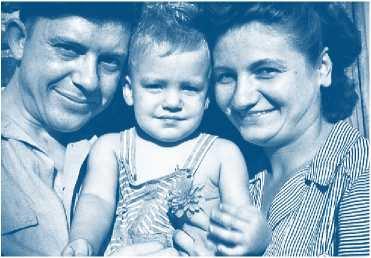
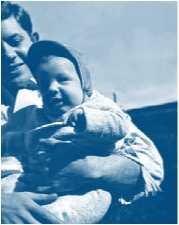


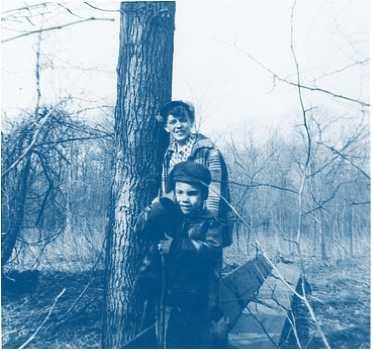
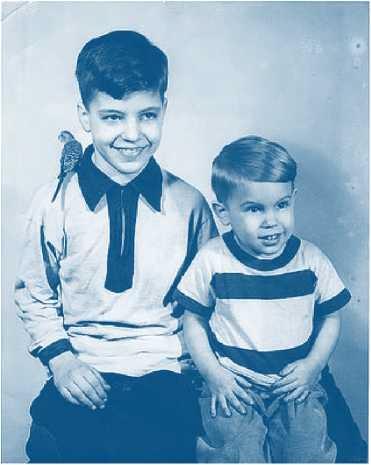
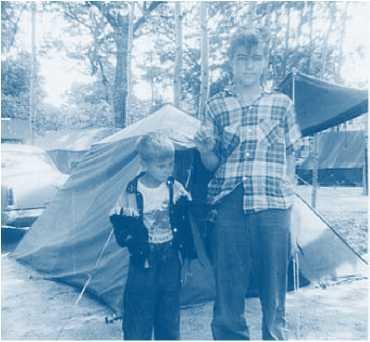
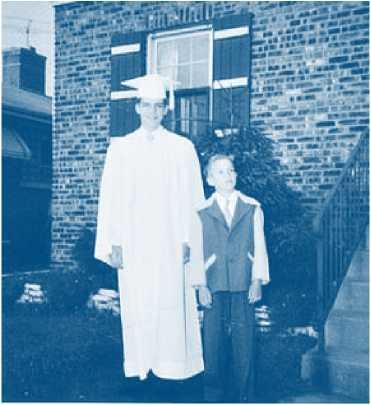
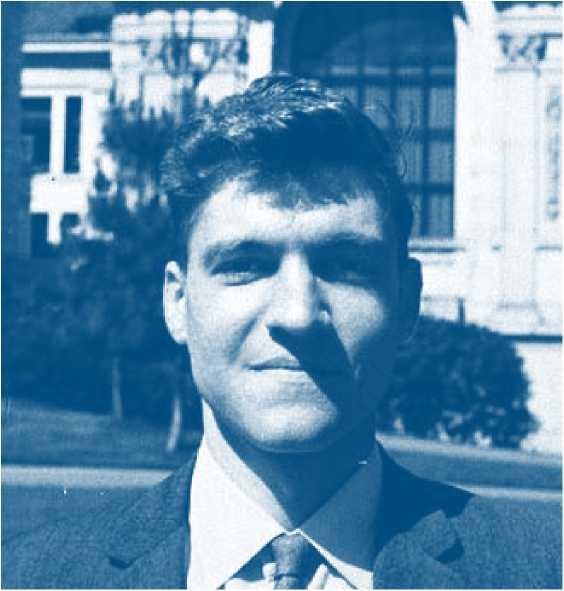
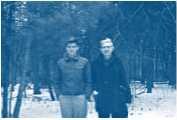
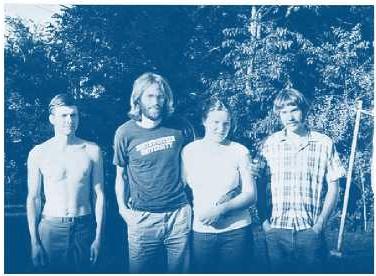
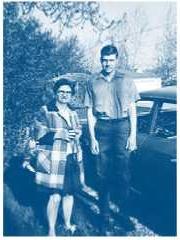
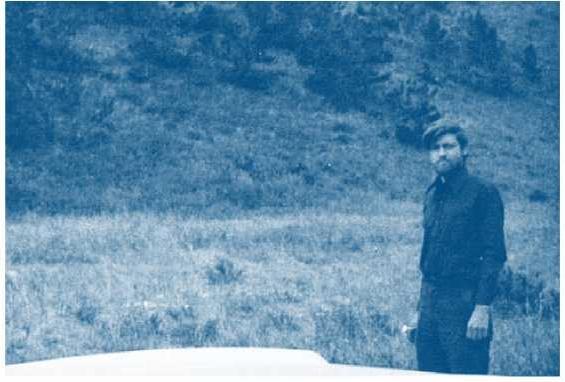
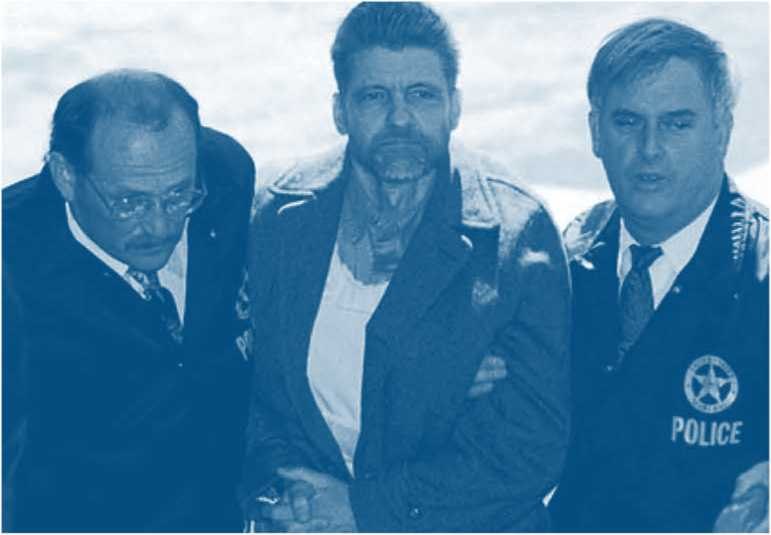
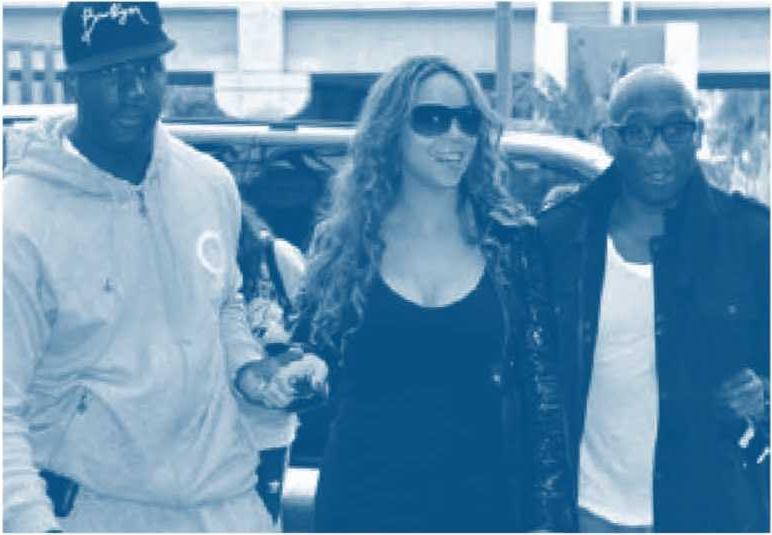
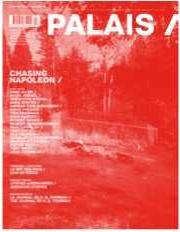
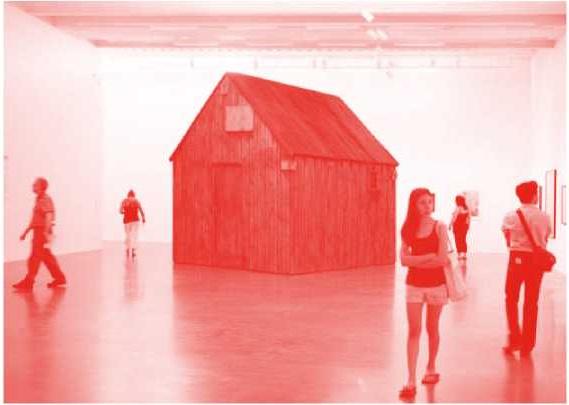
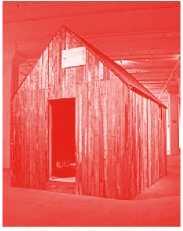
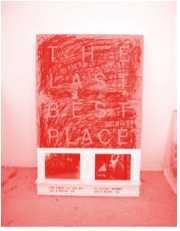
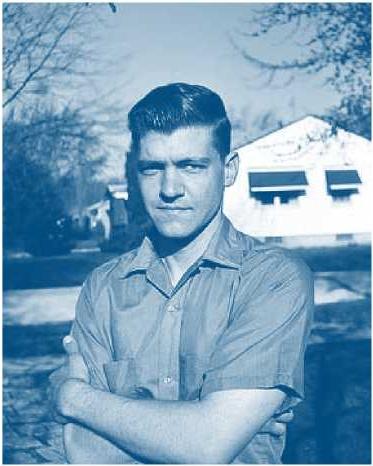
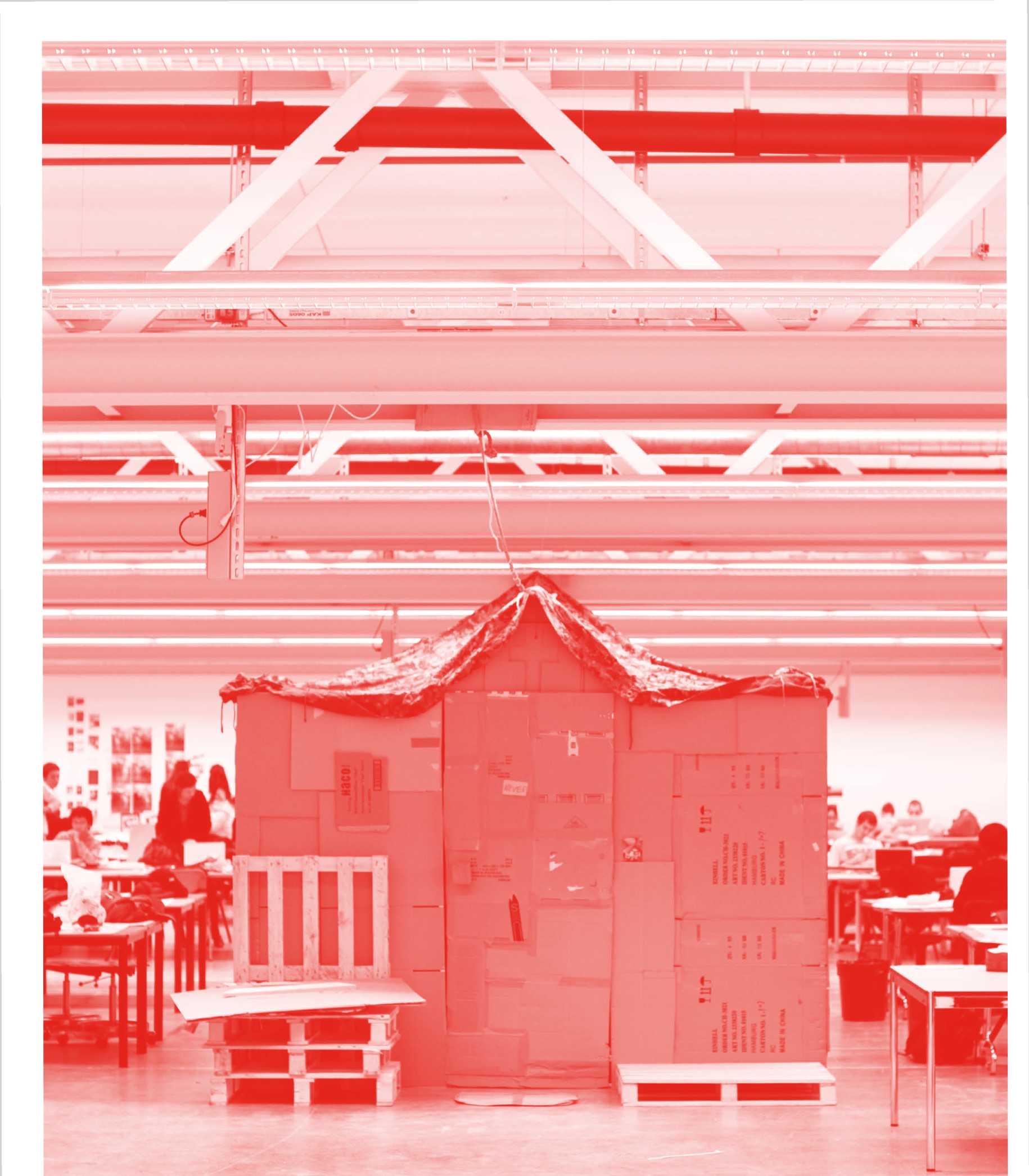
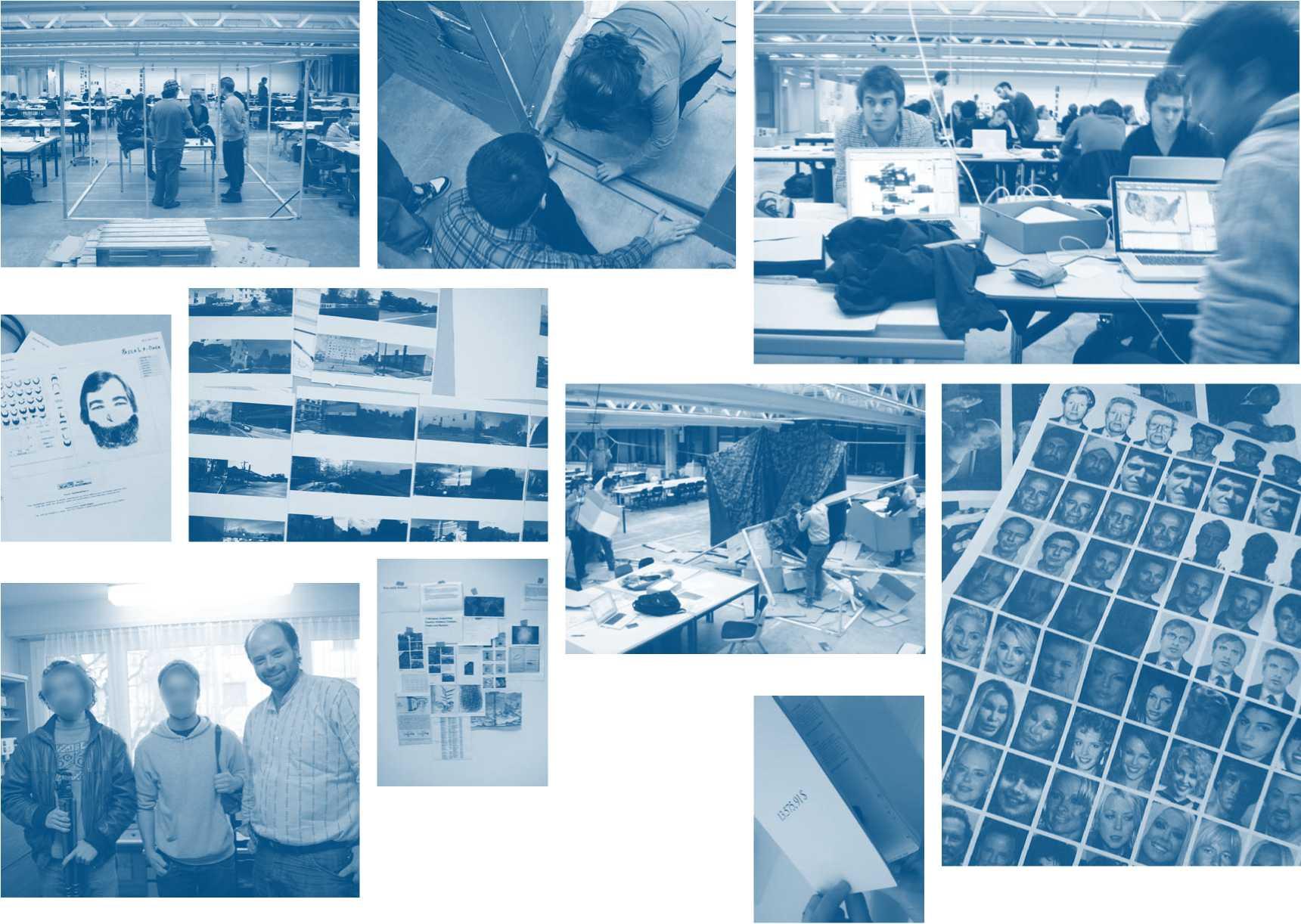

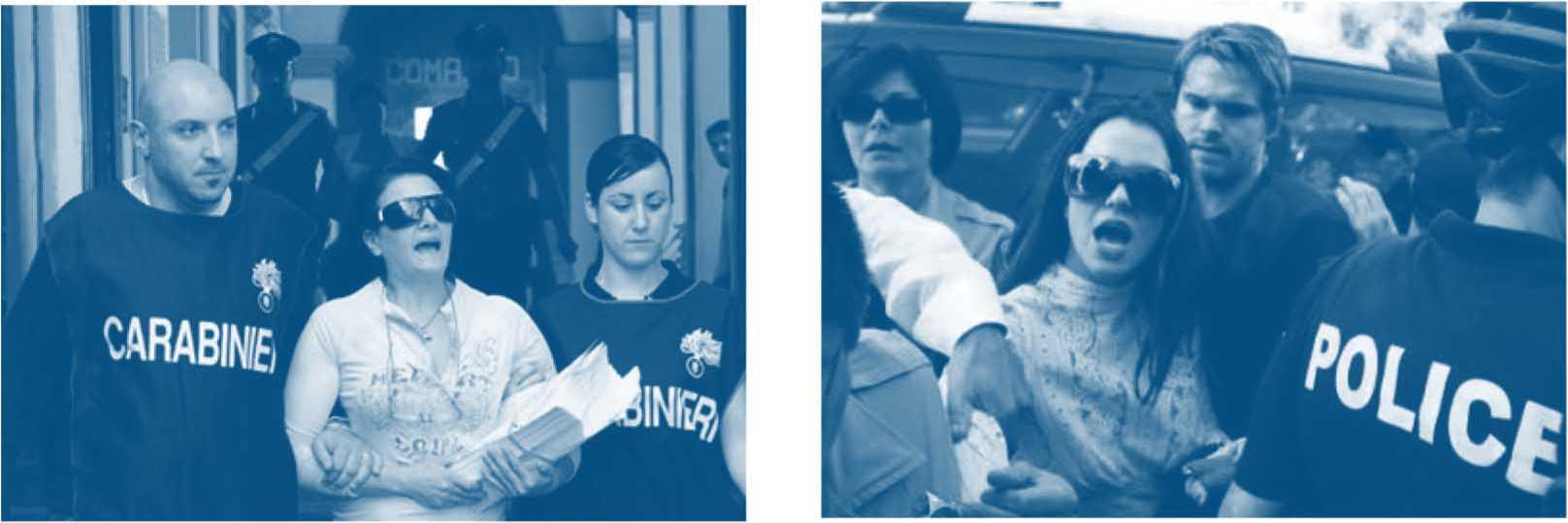
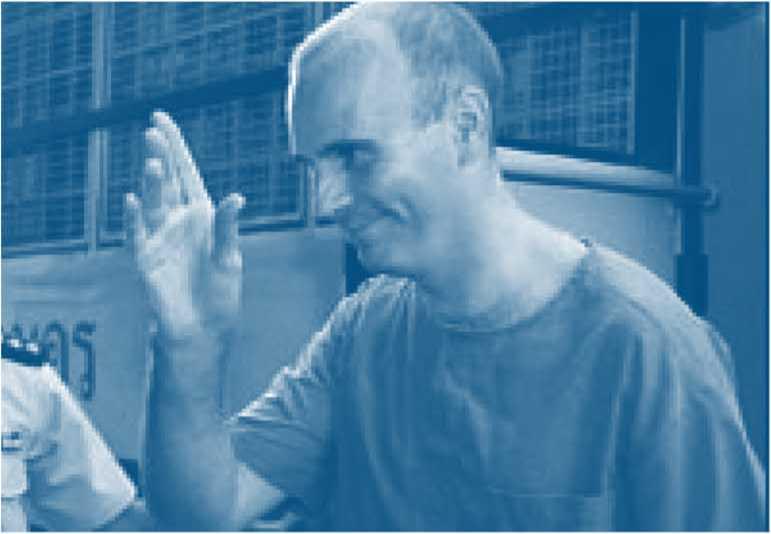
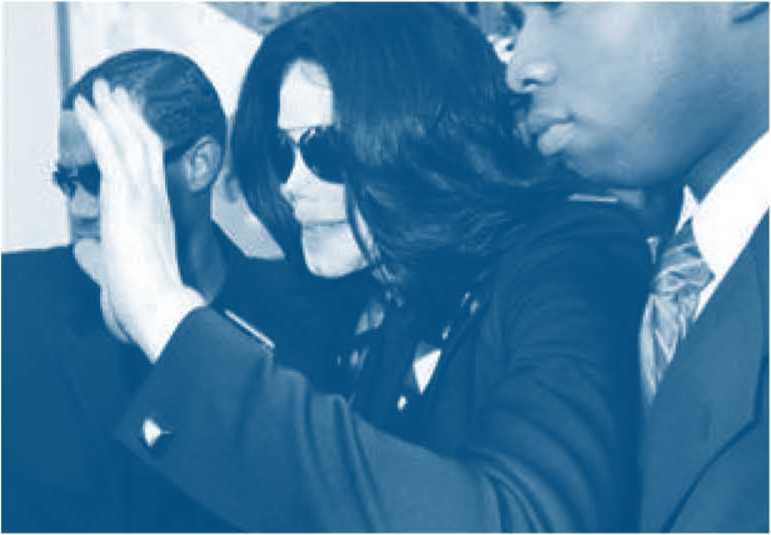
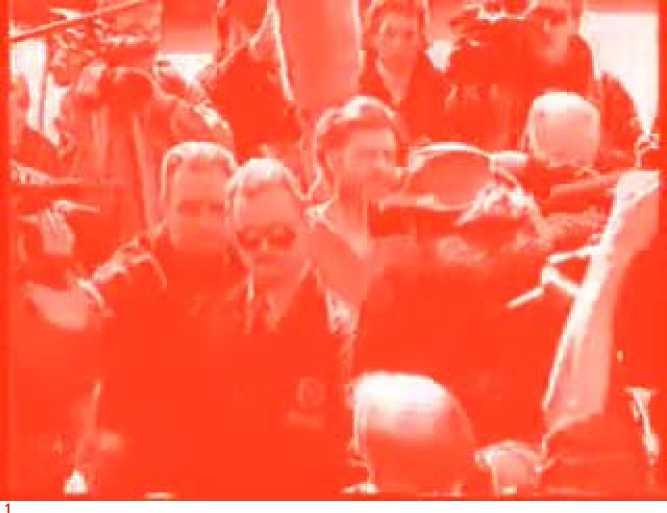
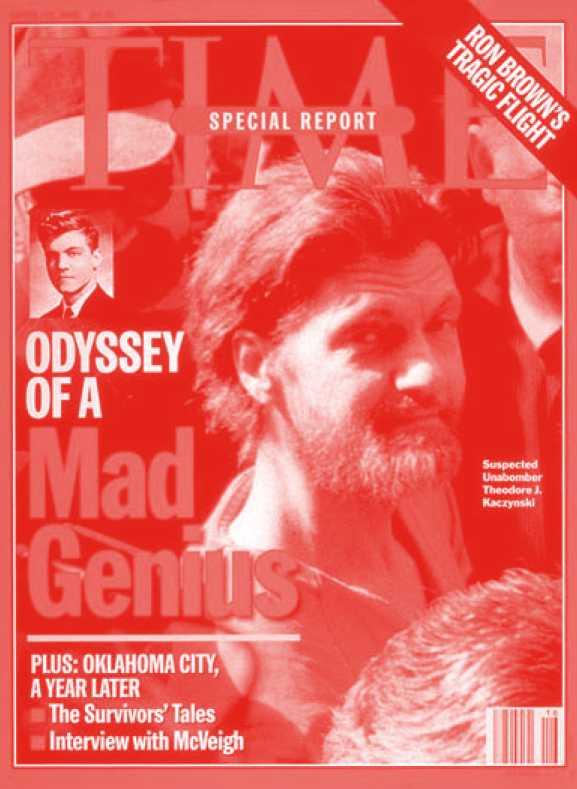
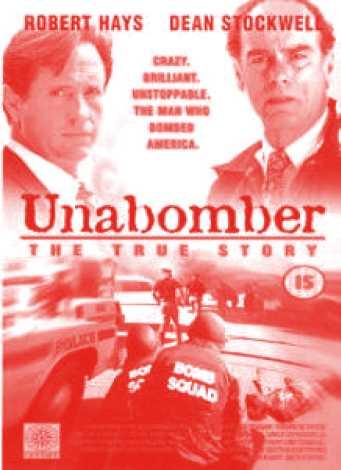
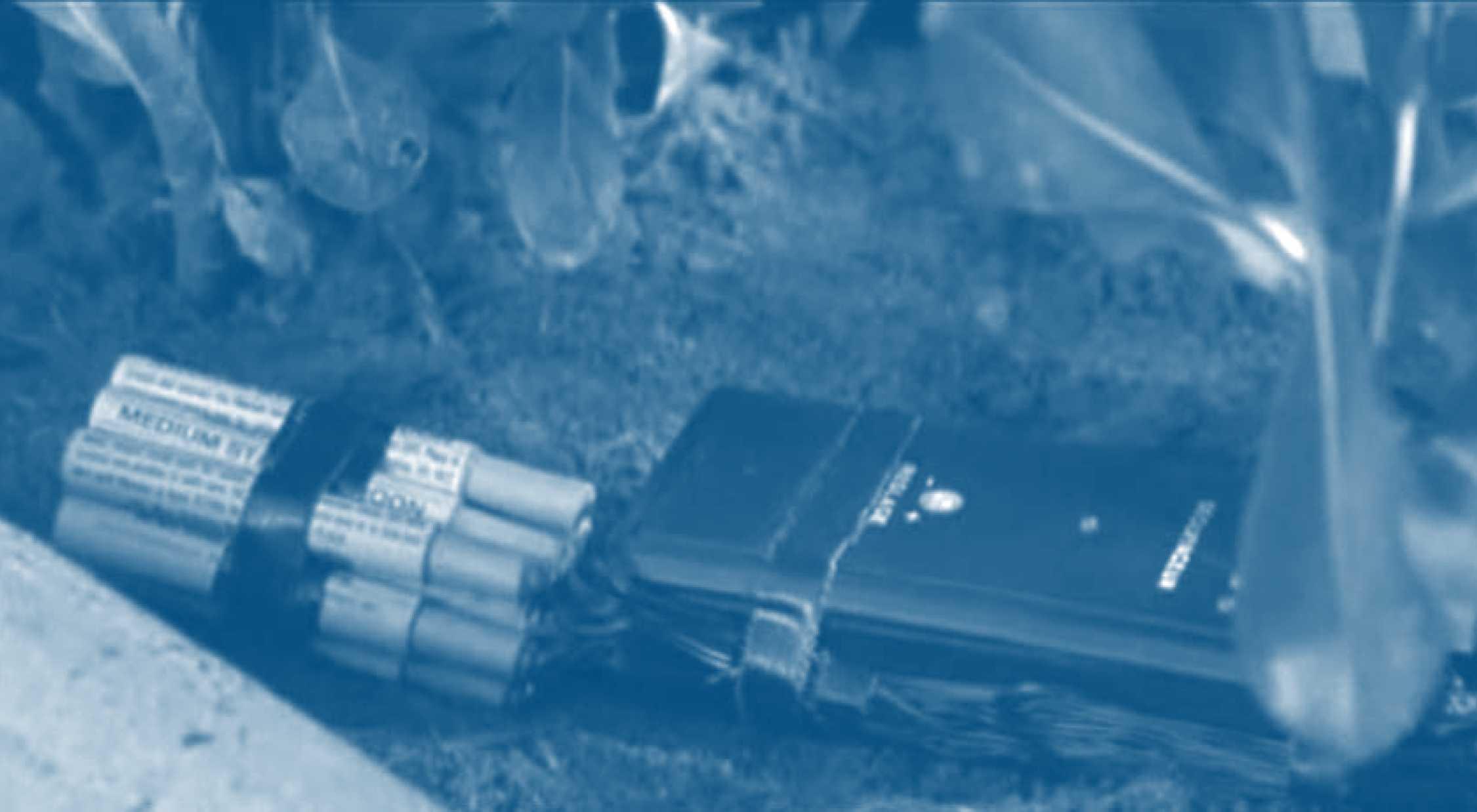
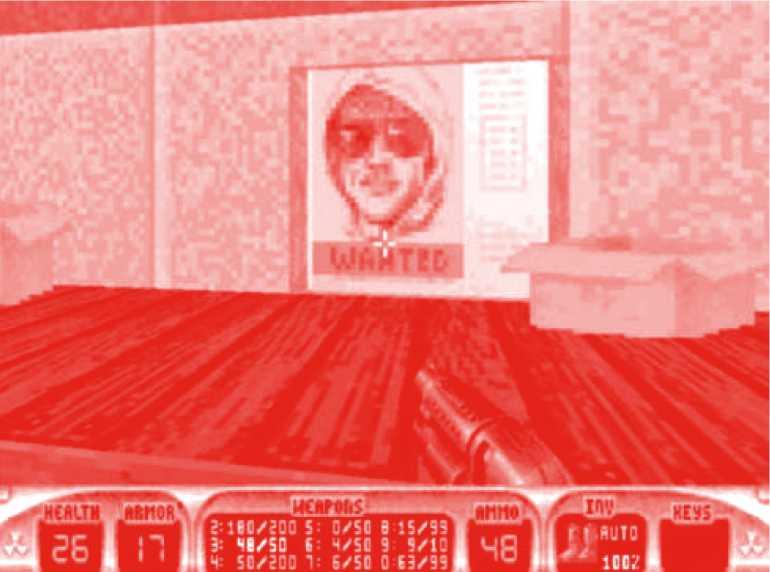

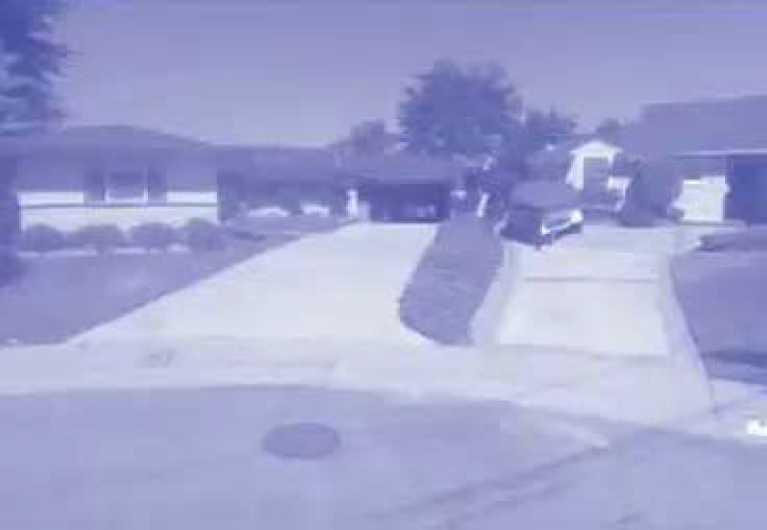
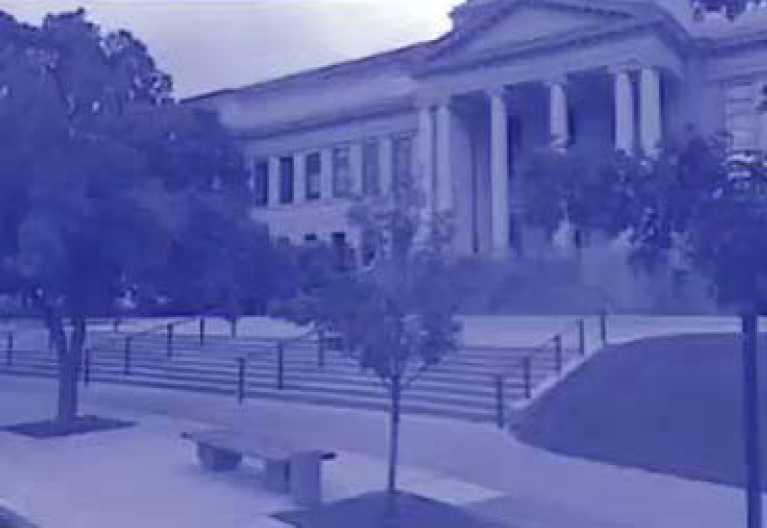
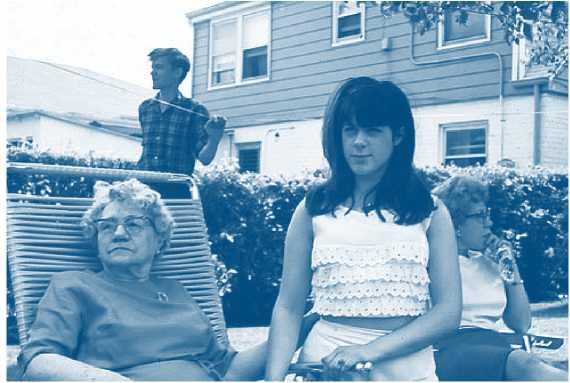
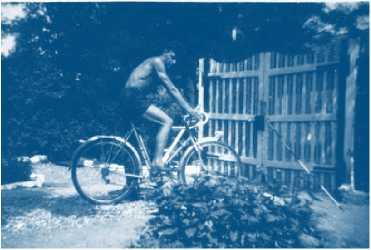
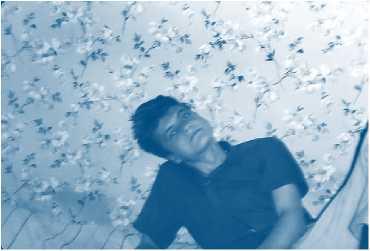
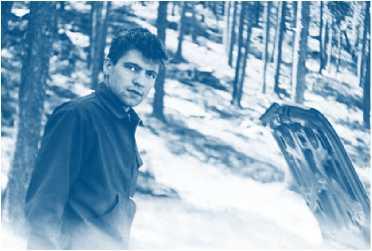
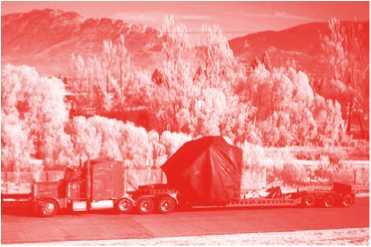
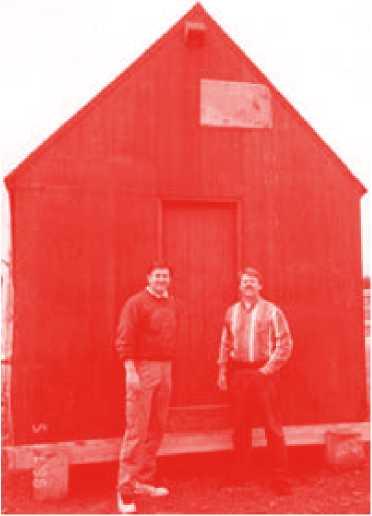
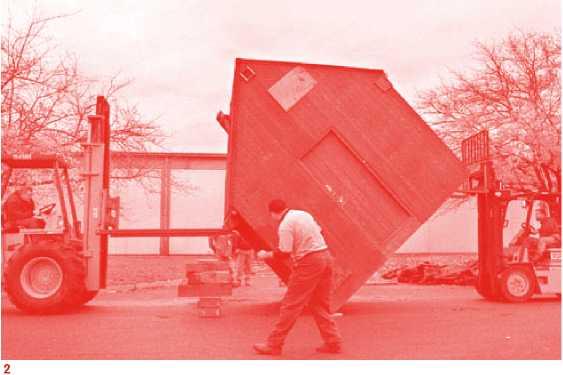
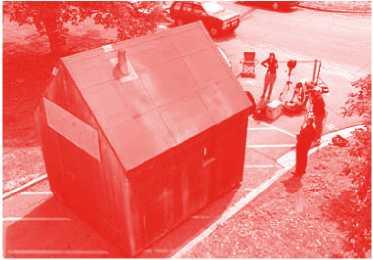
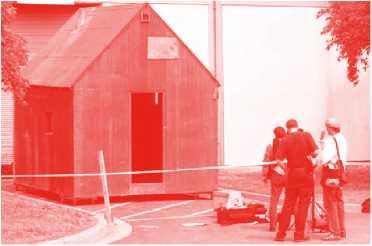
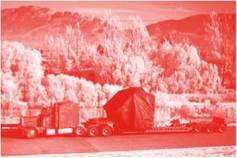
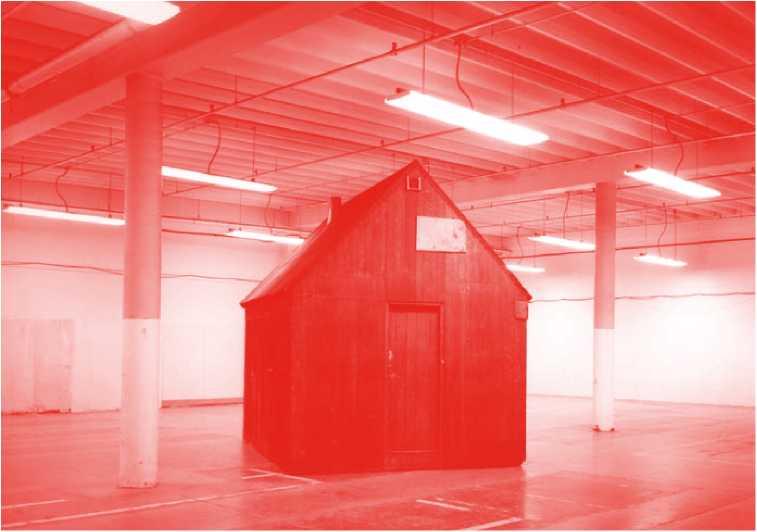

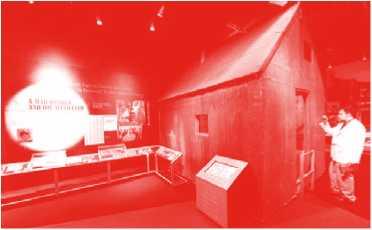
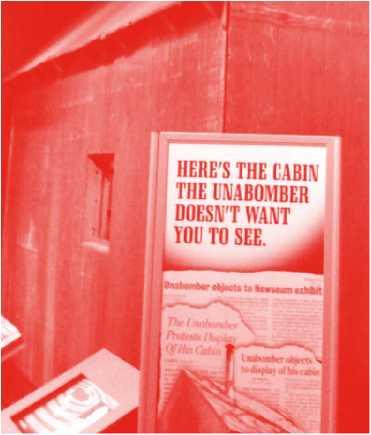
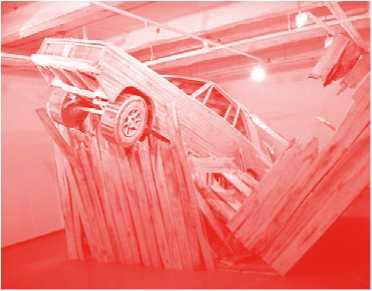





[1] Lutz Dammbeck, «Das Netz», 2004
[1] Lutz Dammbeck, «Das Netz», 2004
[2] Bill Joy, «Why the Future Doesn’t Need Us», Wired Magazine, April 2000.
Martin Rees, «Our Final Century», William Heineman, 2003
Richard A. Posner, «Catastrophe: Risk and Response», Oxford University Press, 2005
[2] Bill Joy, «Why the Future Doesn’t Need Us», Wired Magazine, April 2000.
Martin Rees, «Our Final Century», William Heineman, 2003
Richard A. Posner, «Catastrophe: Risk and Response», Oxford University Press, 2005
[3] Theodore J. Kaczynski, «The Road To Revolution», Xenia Press, 2008
[3] Theodore J. Kaczynski, «The Road To Revolution», Xenia Press, 2008
[4] Barack Obama nach dem am 5 Januar 2010 knapp vereitelten Anschlag auf ein Passagierflugzeug: «The System has failed in a potentially disastrous way»
[4] Barack Obama nach dem am 5 Januar 2010 knapp vereitelten Anschlag auf ein Passagierflugzeug: «The System has failed in a potentially disastrous way»
[5] See Paul Hollander. The Survival of the Adversary Culture.
[6] The process is ably documented by Martha F. Lee, Earth First!: Environmental Apocalypse, Syracuse University Press. 1995.
